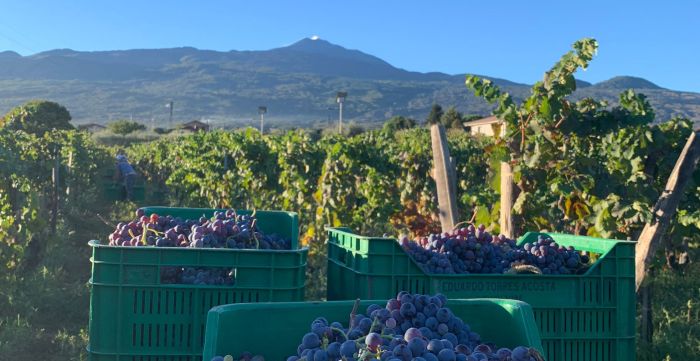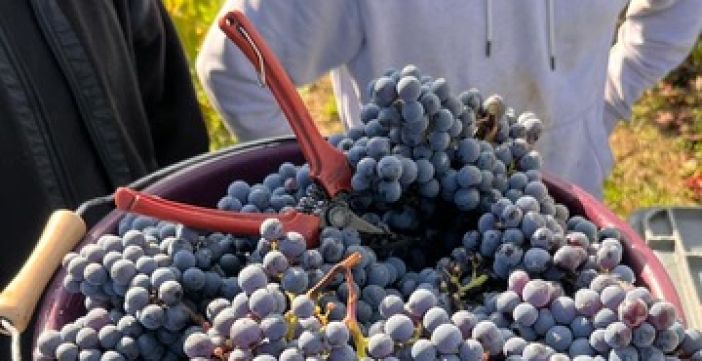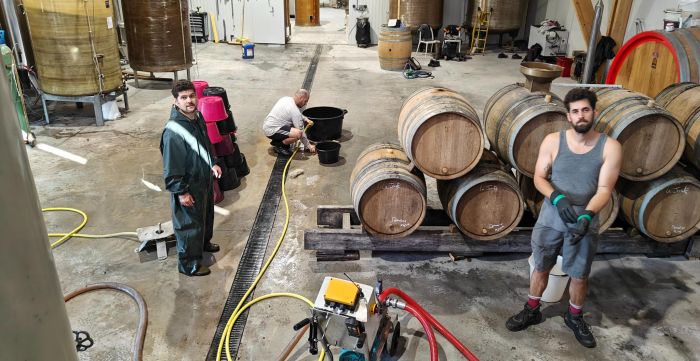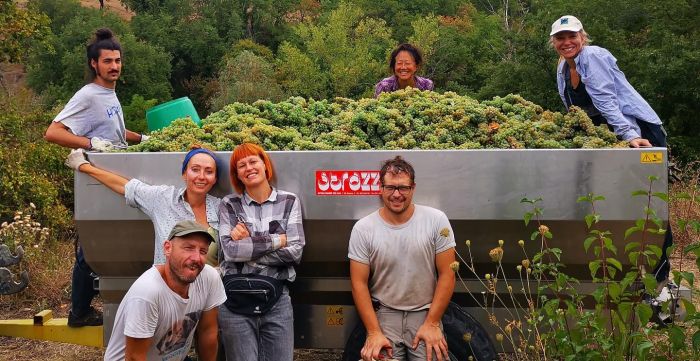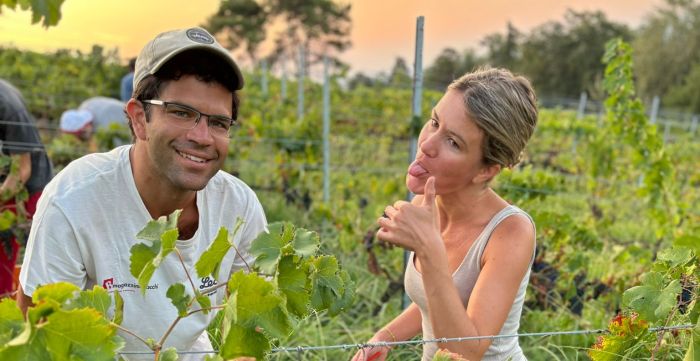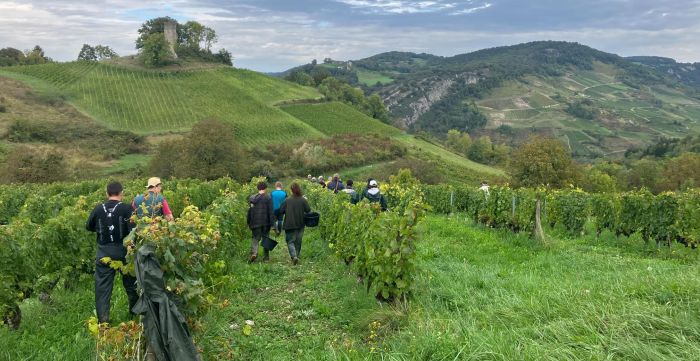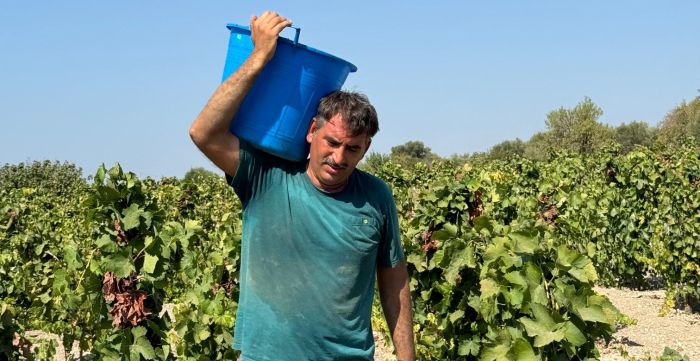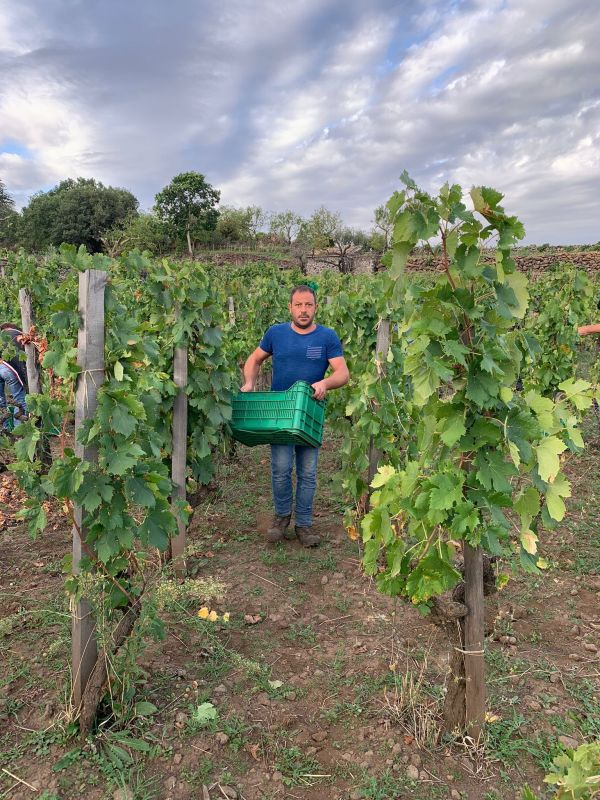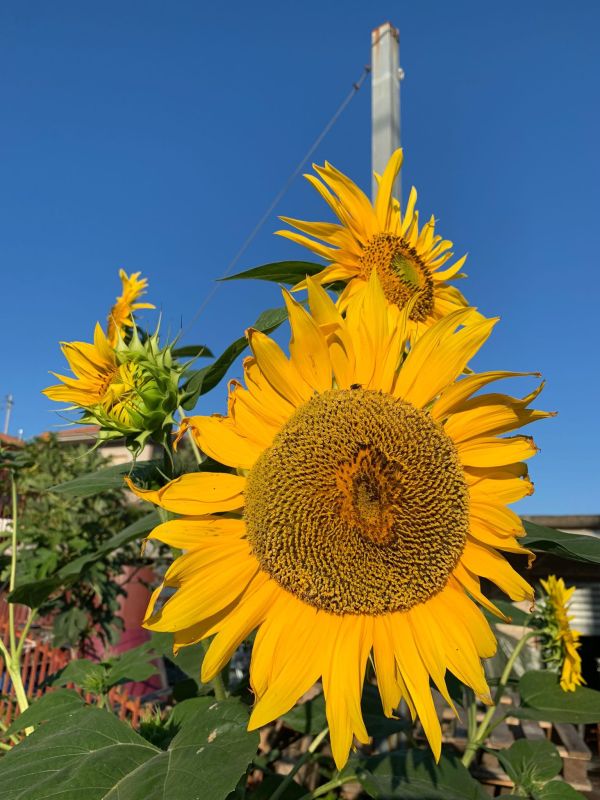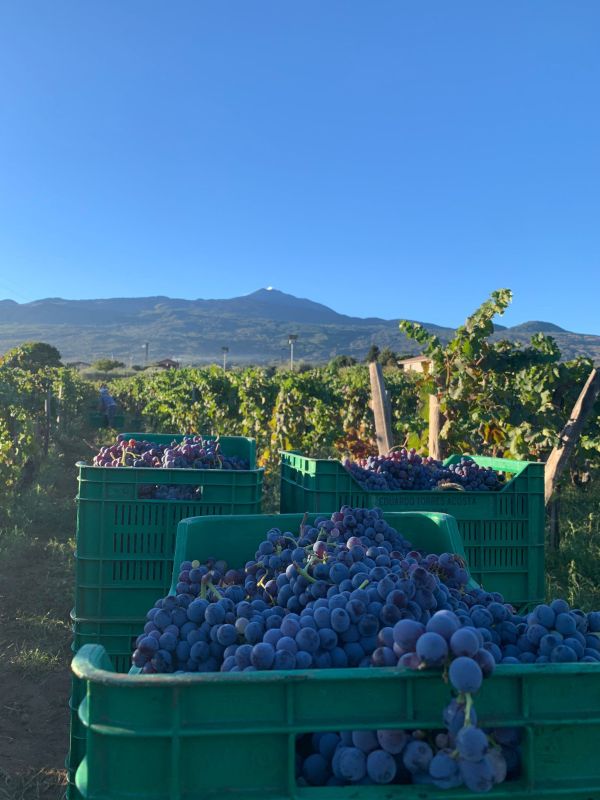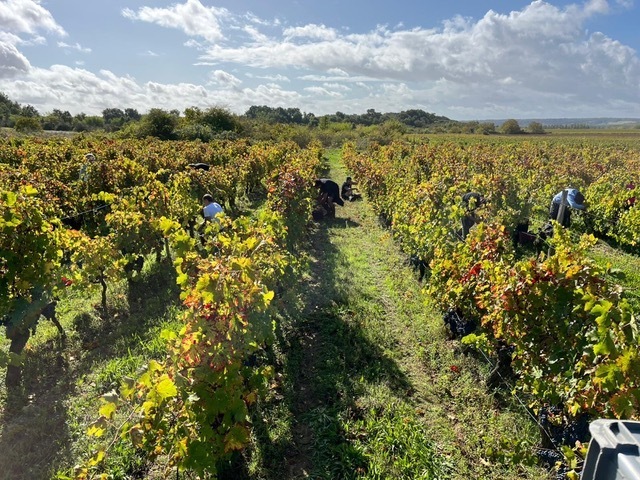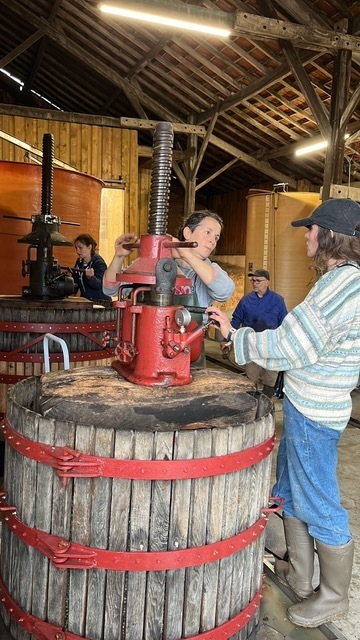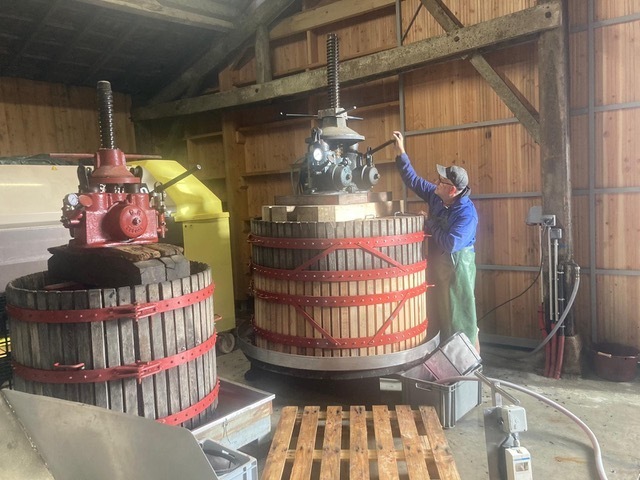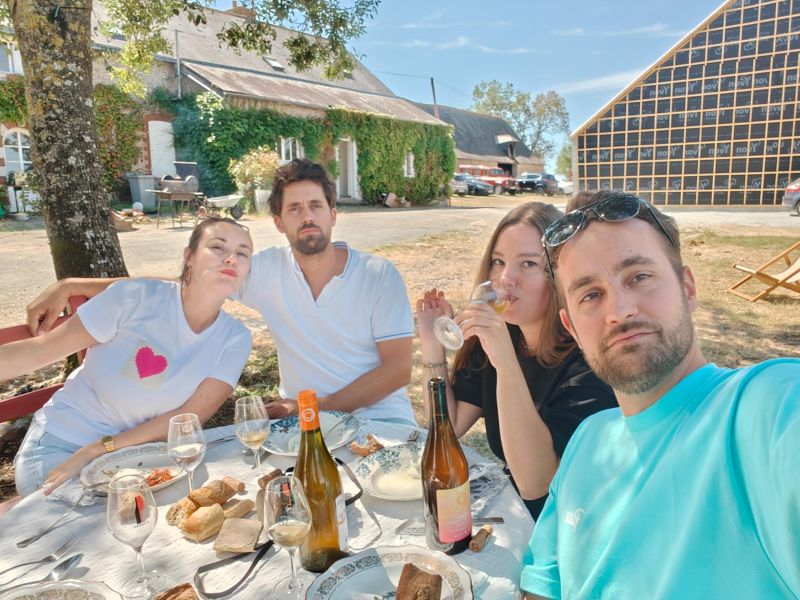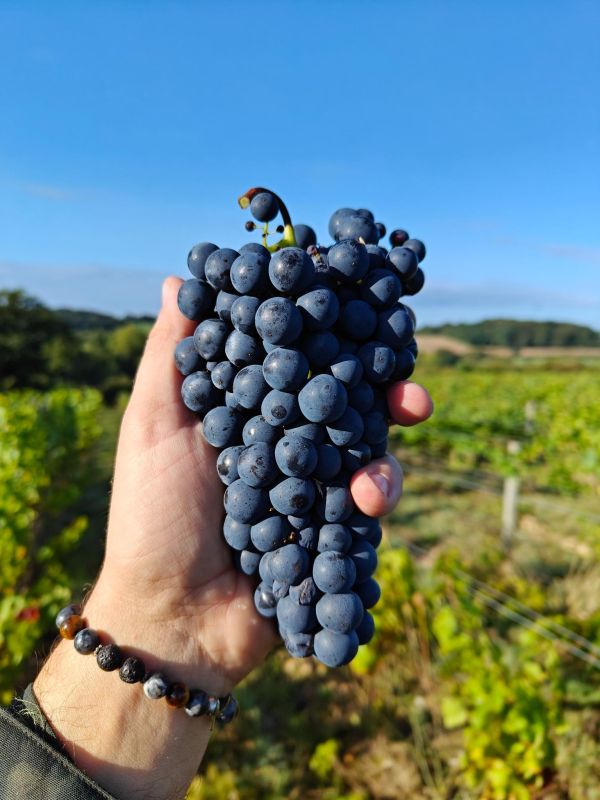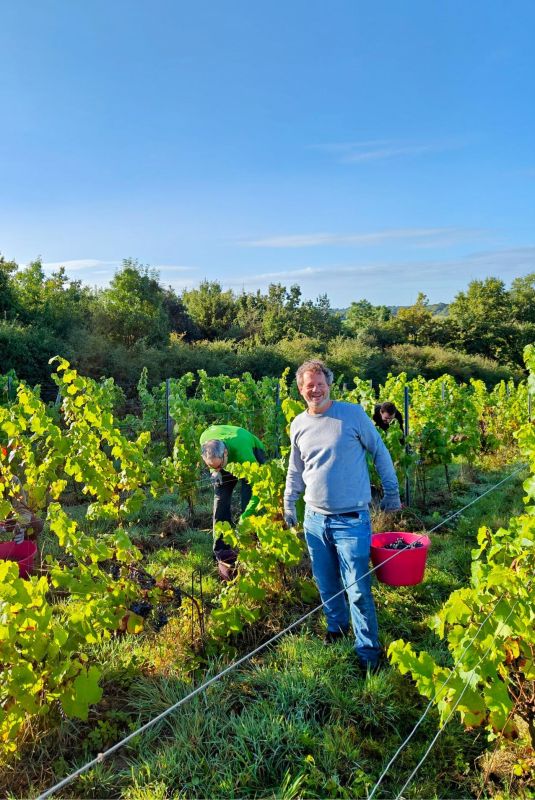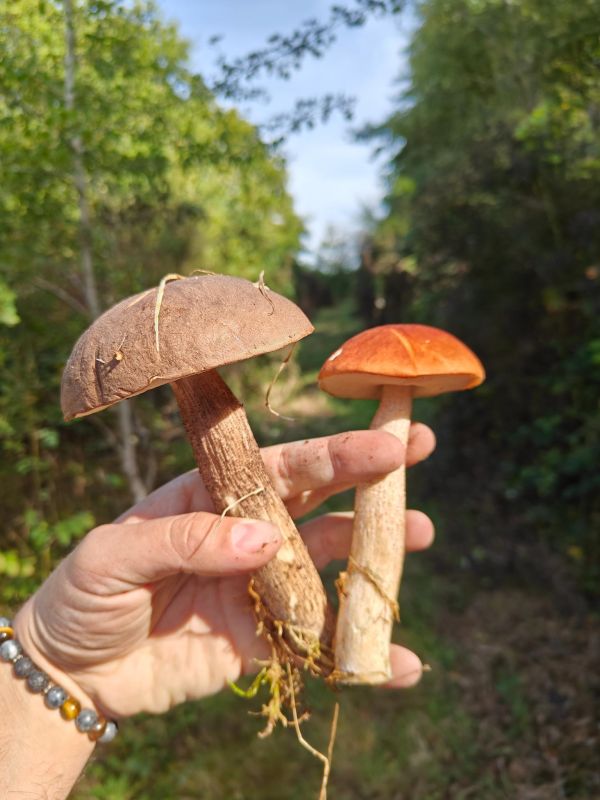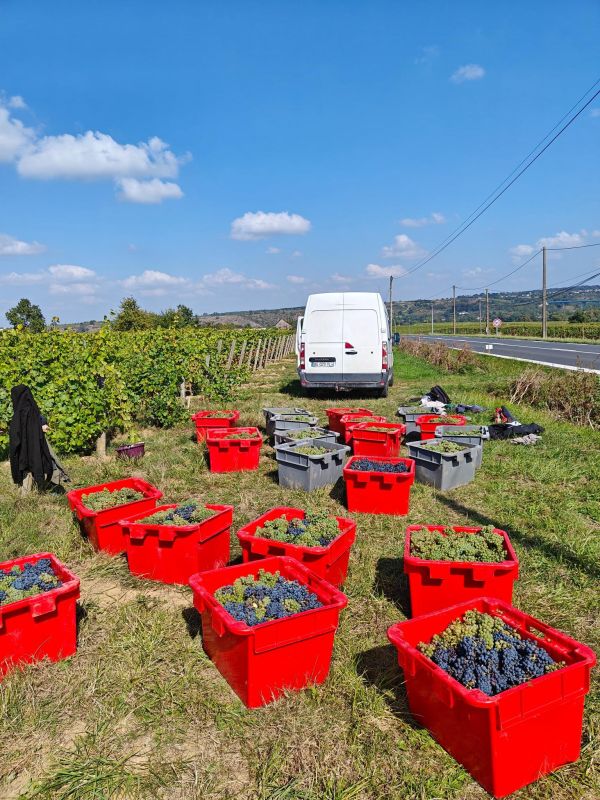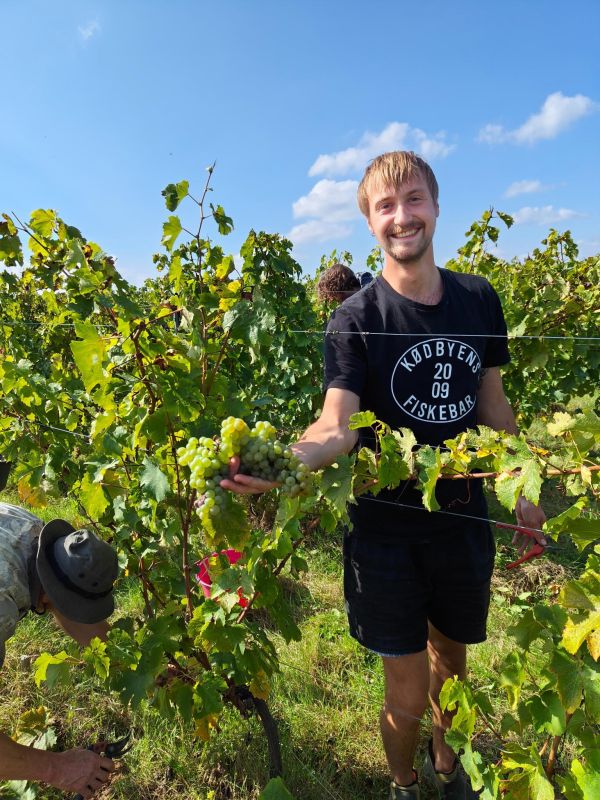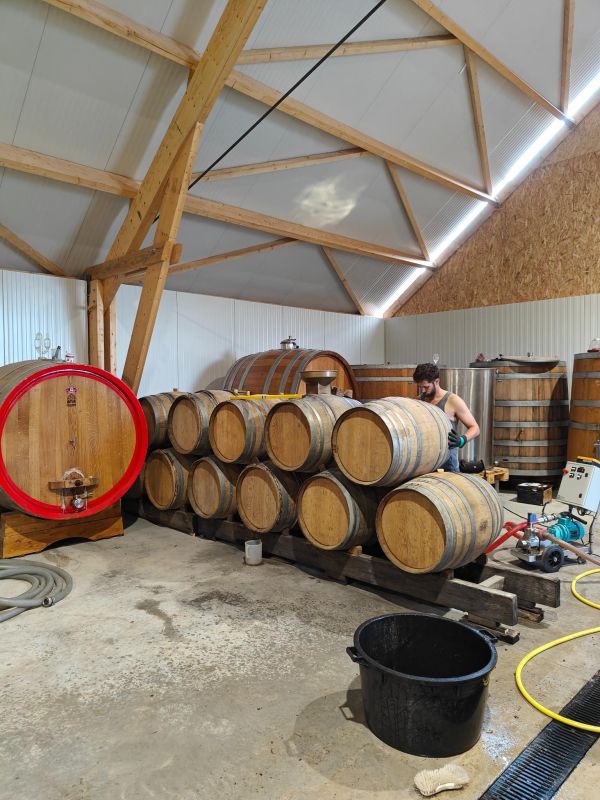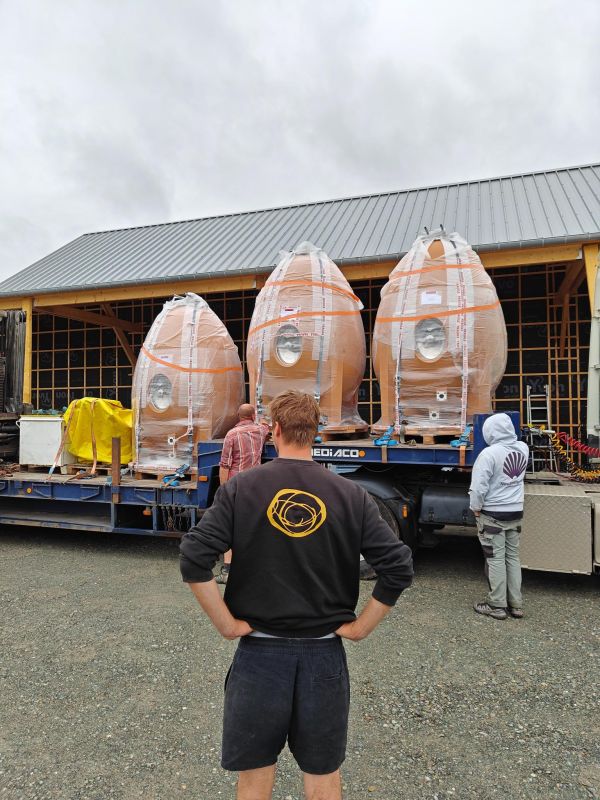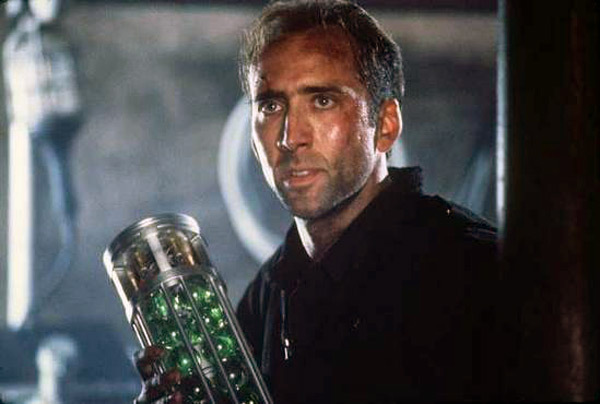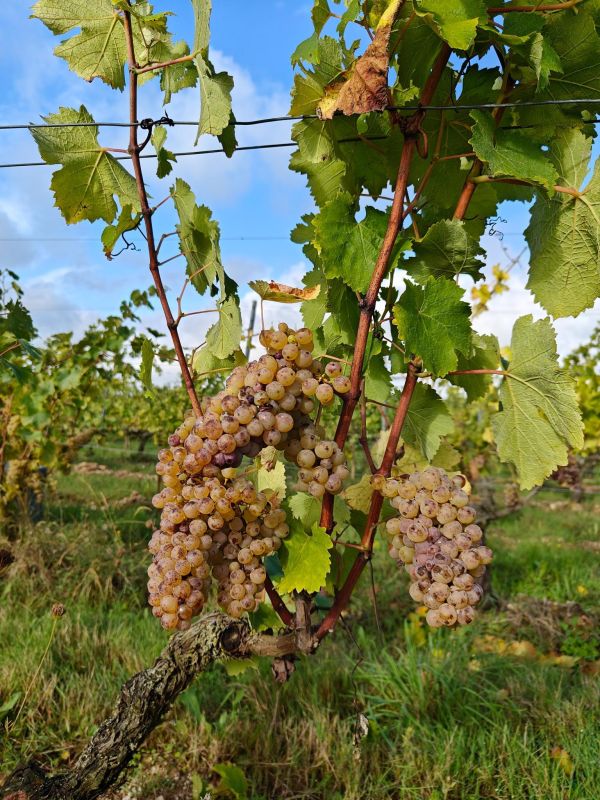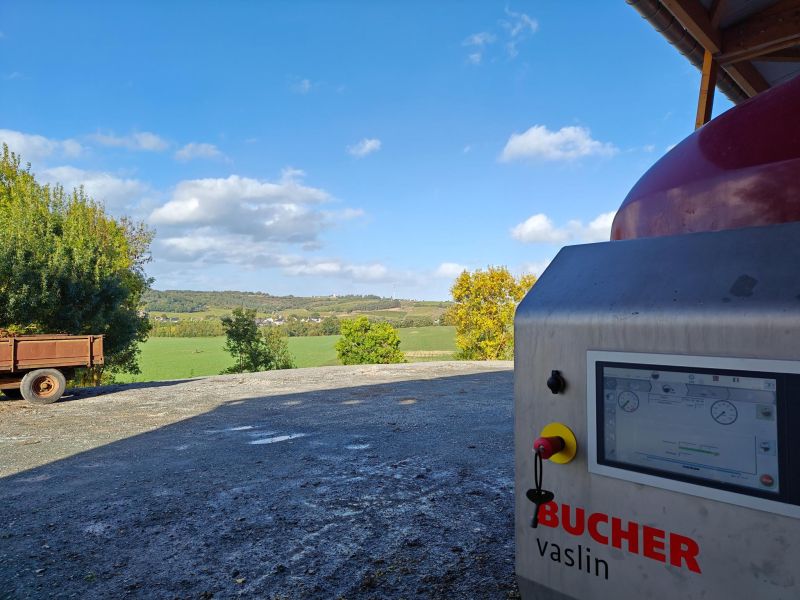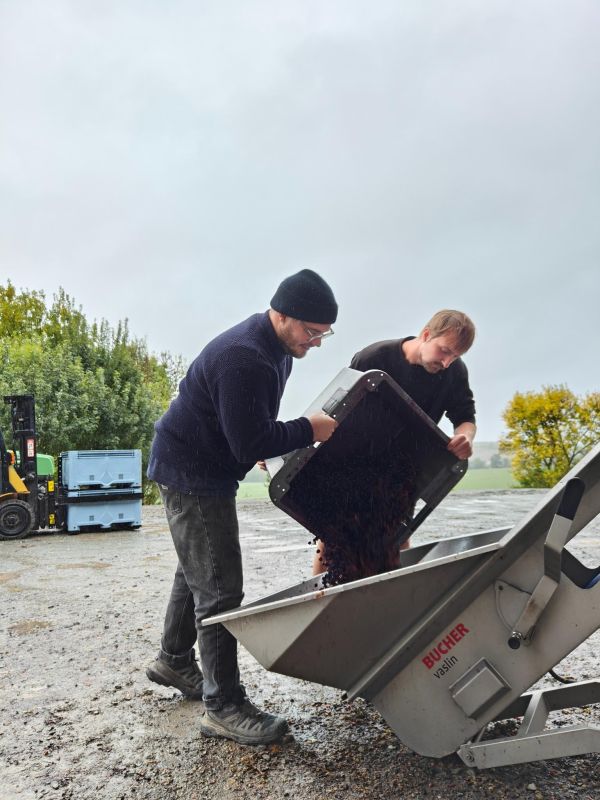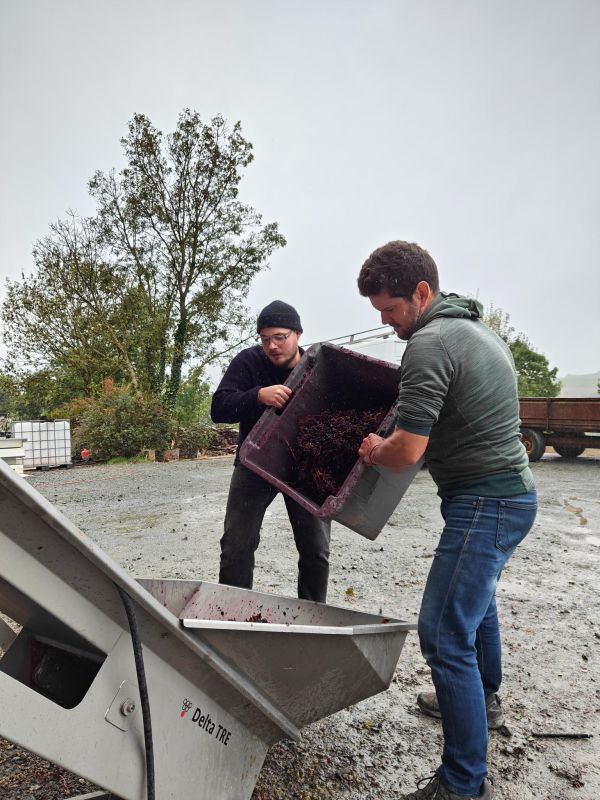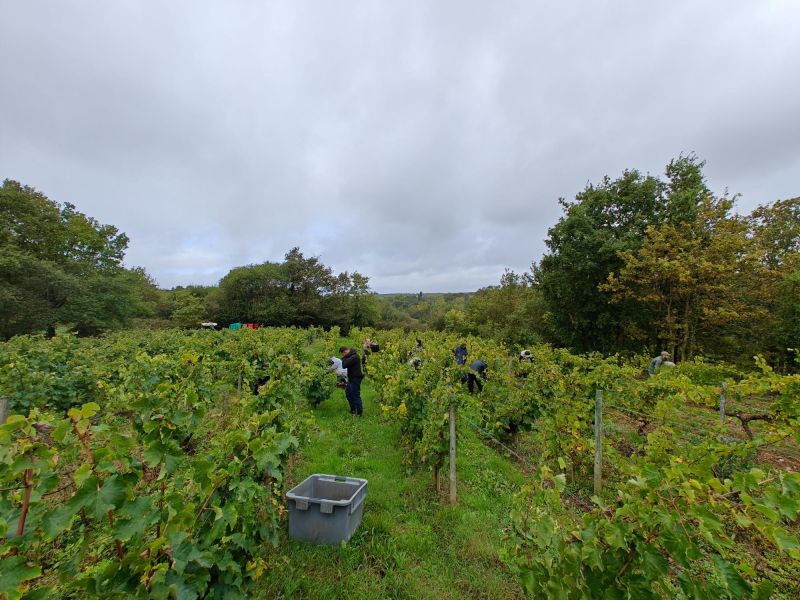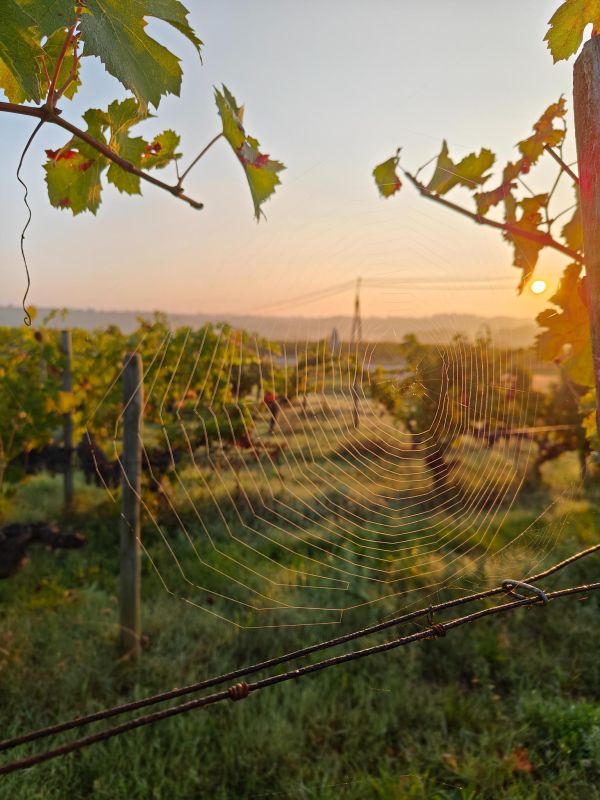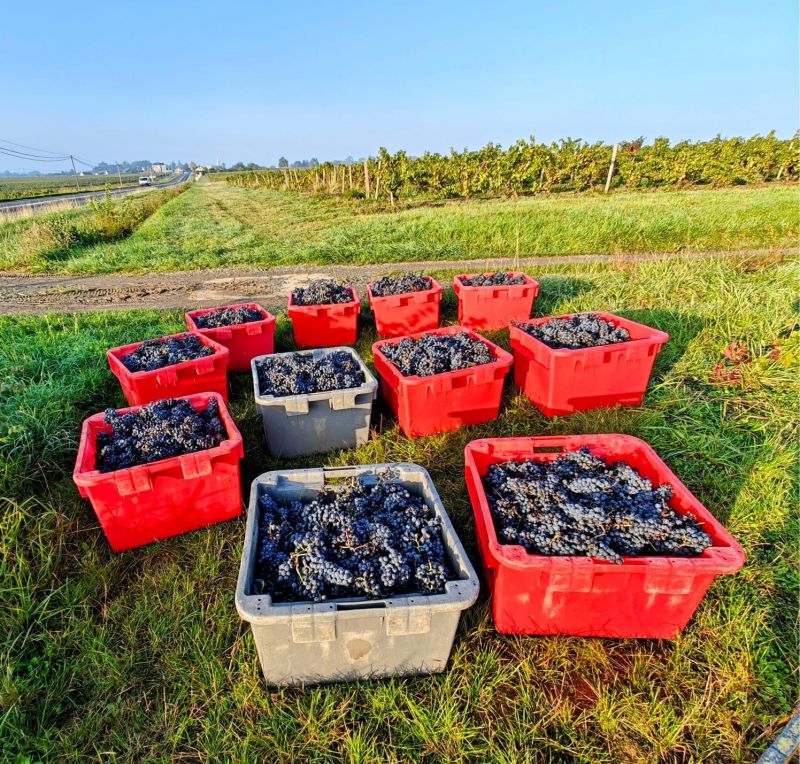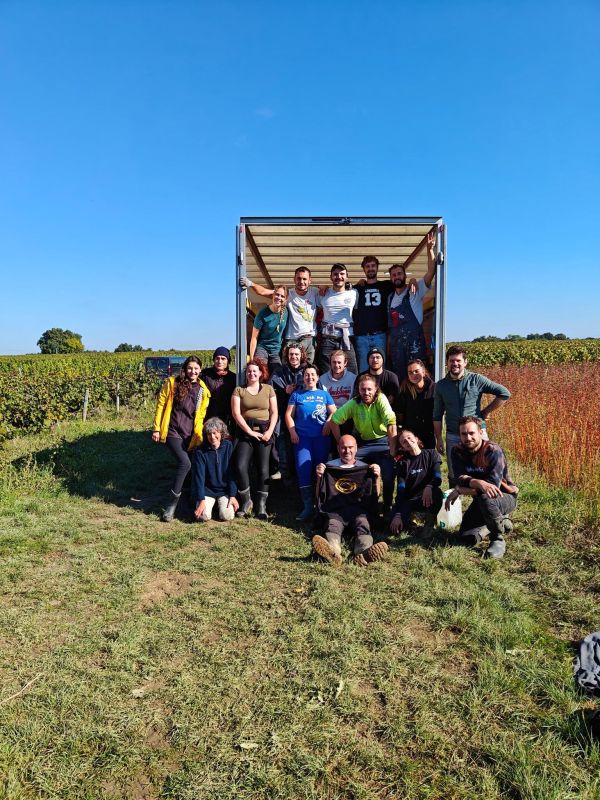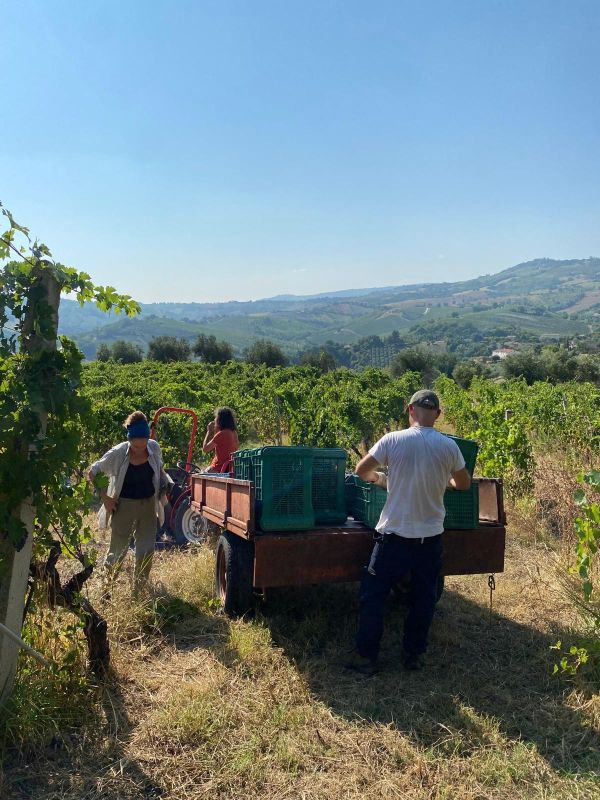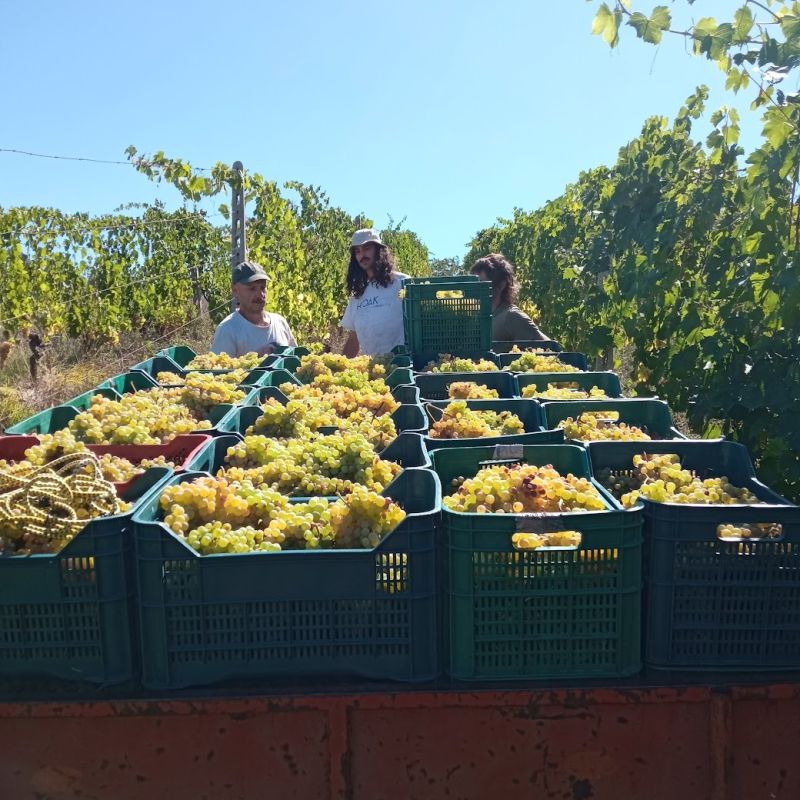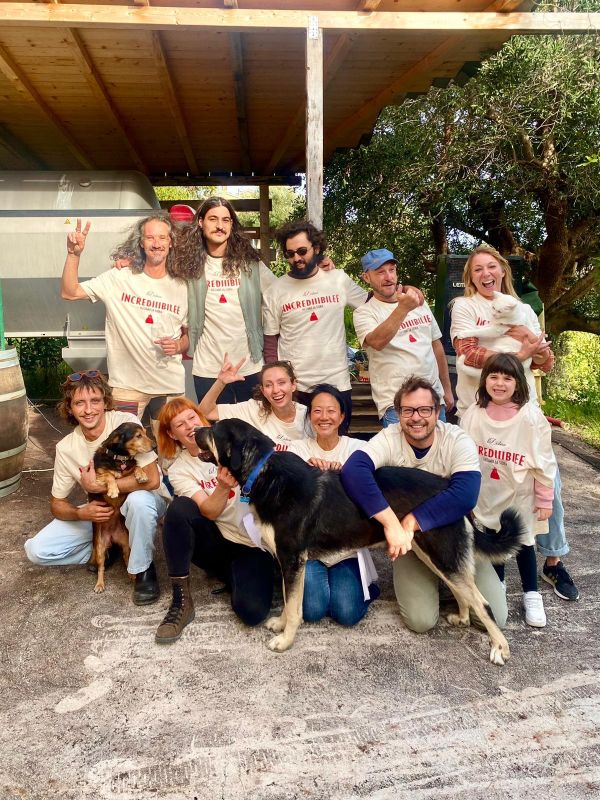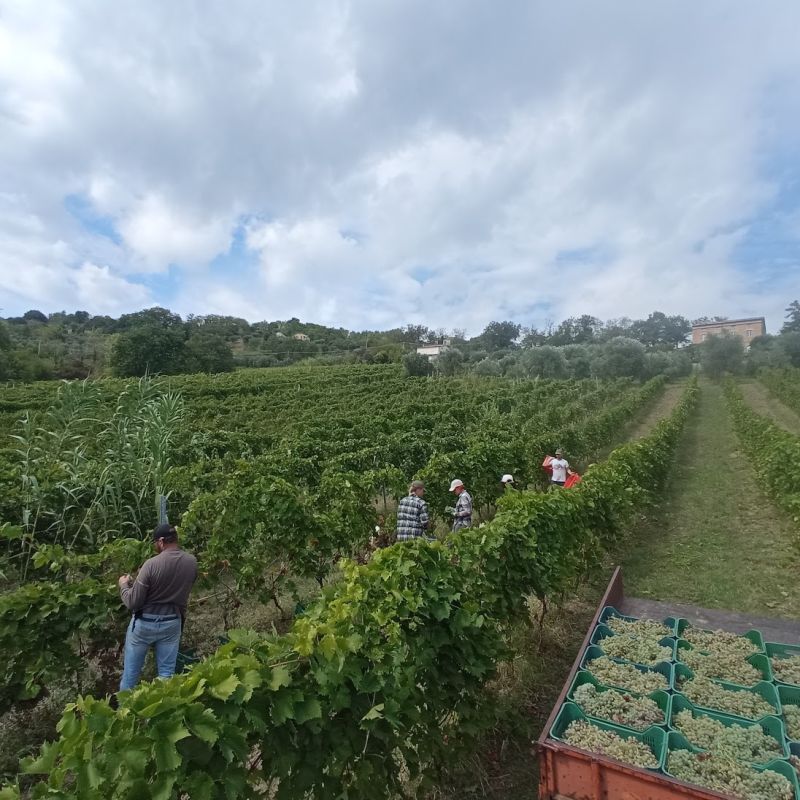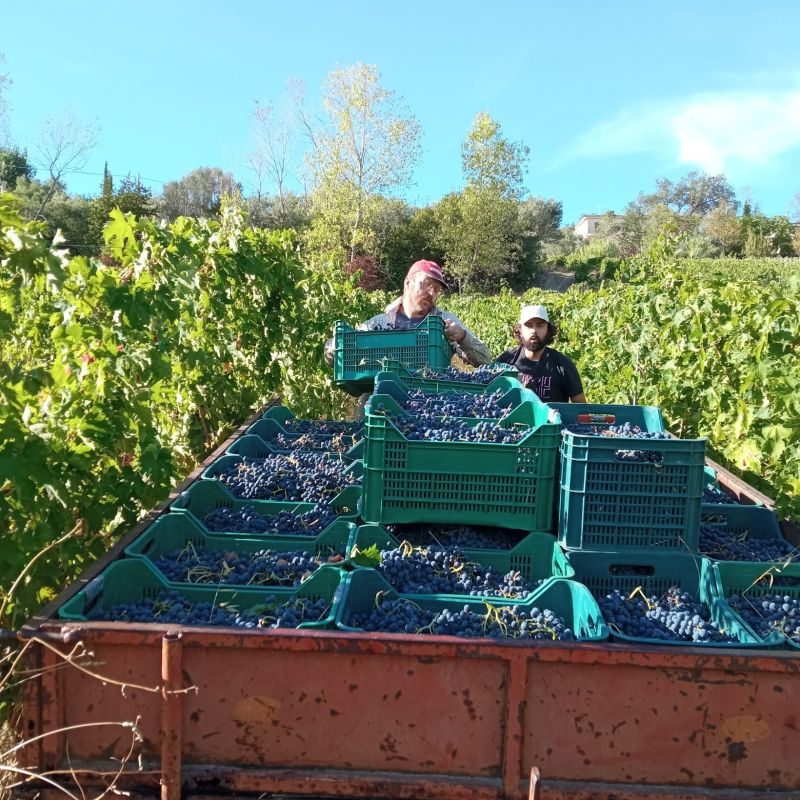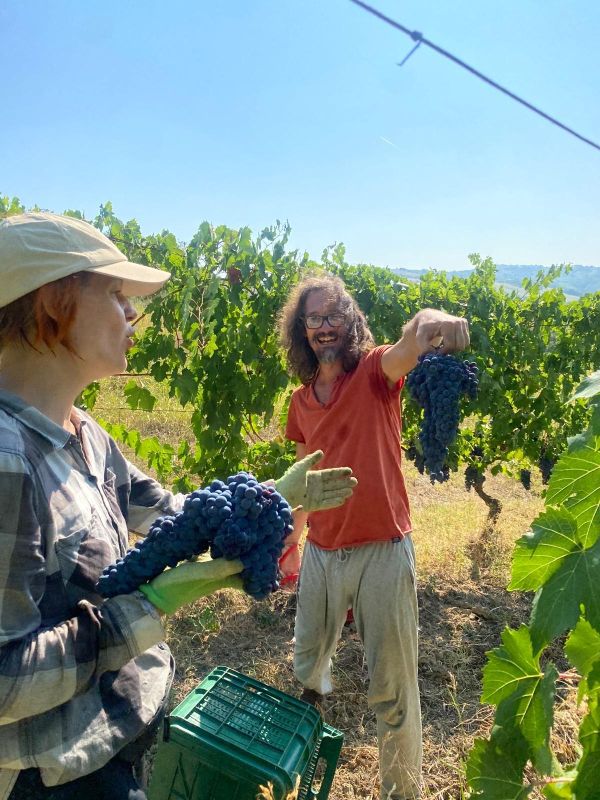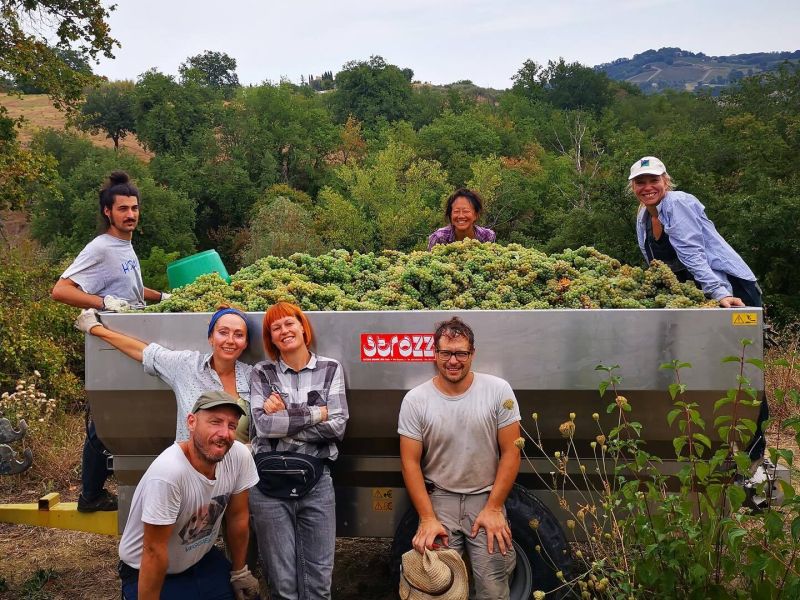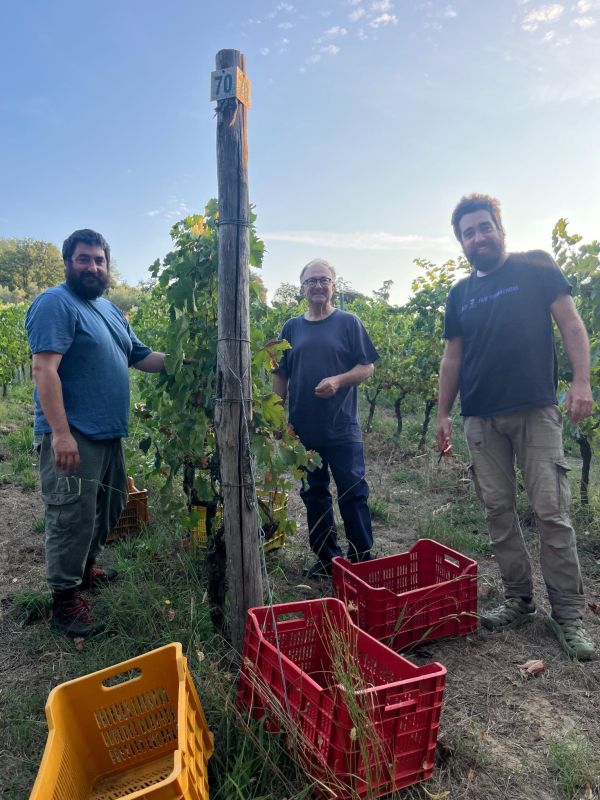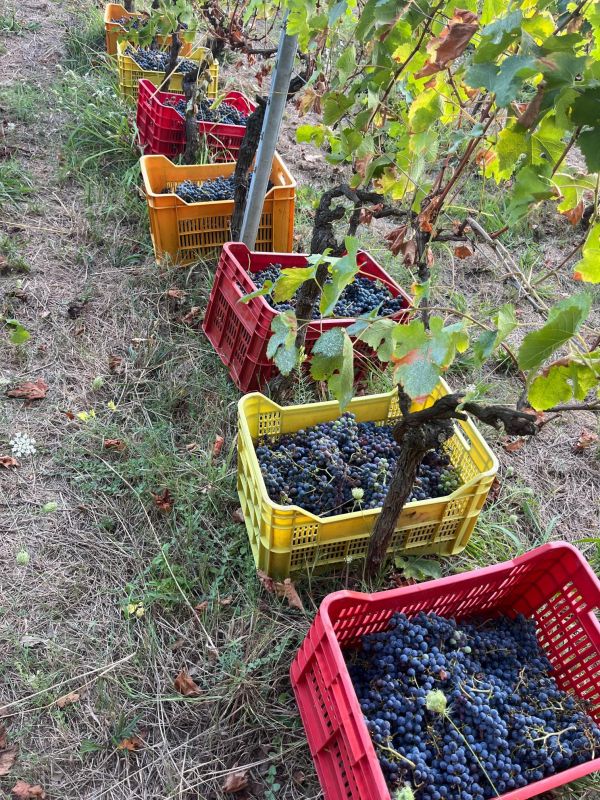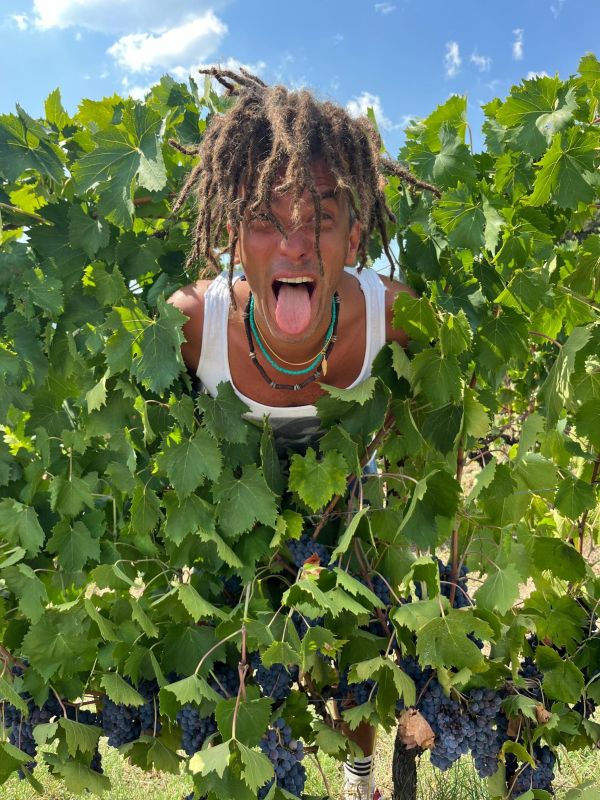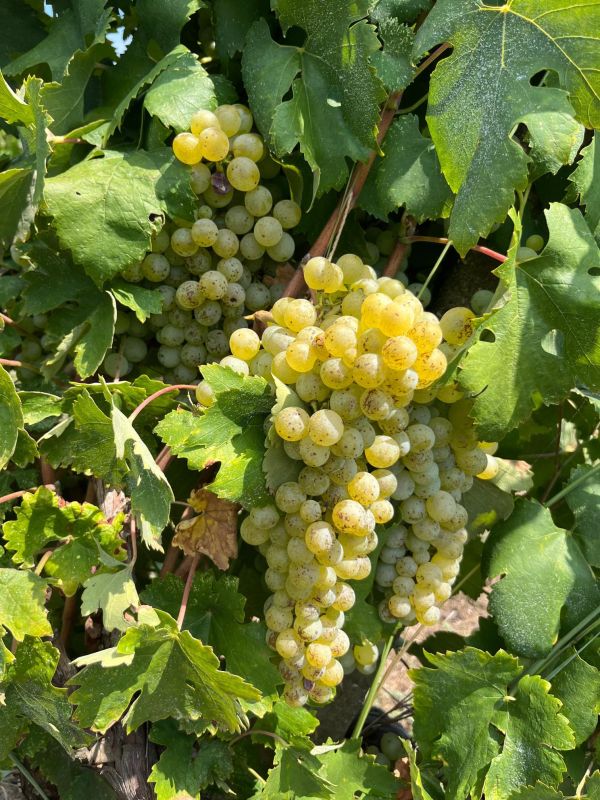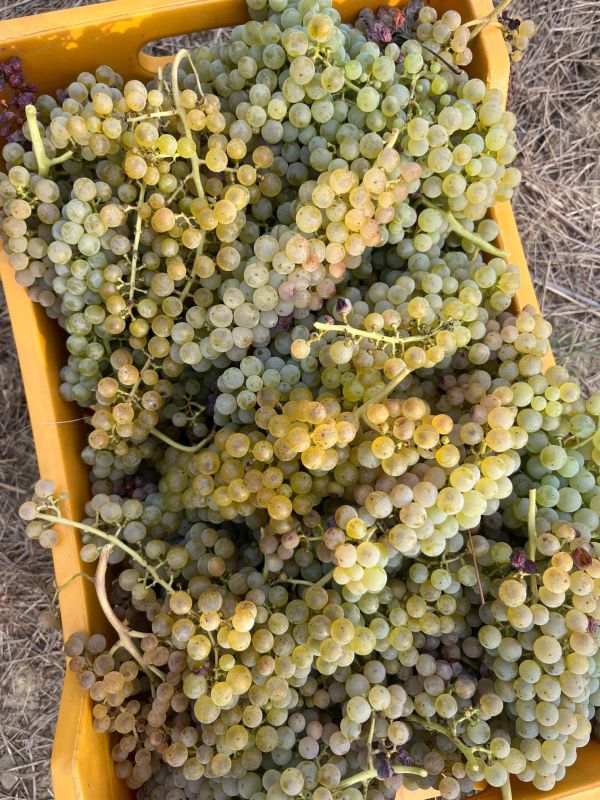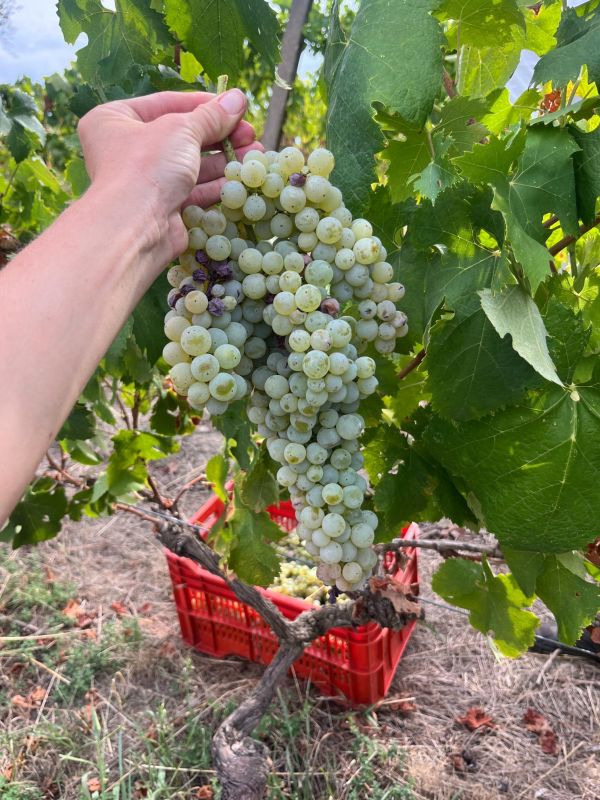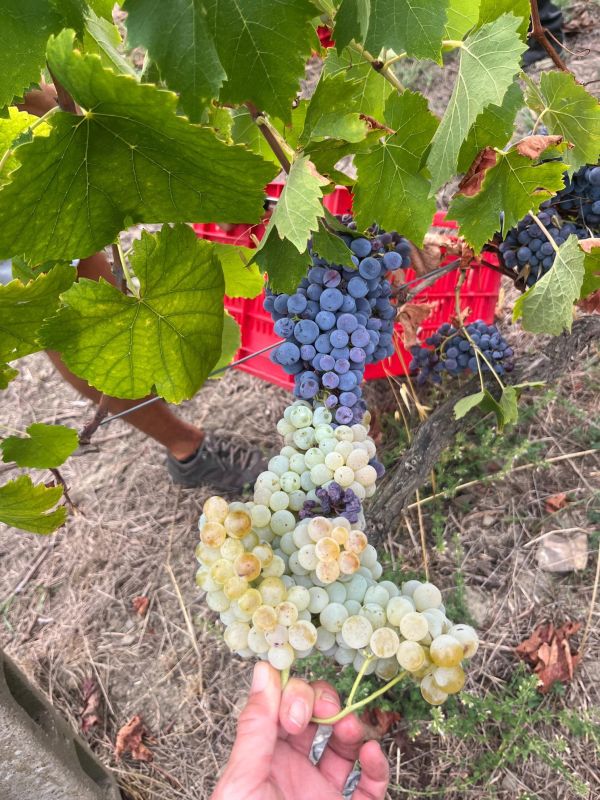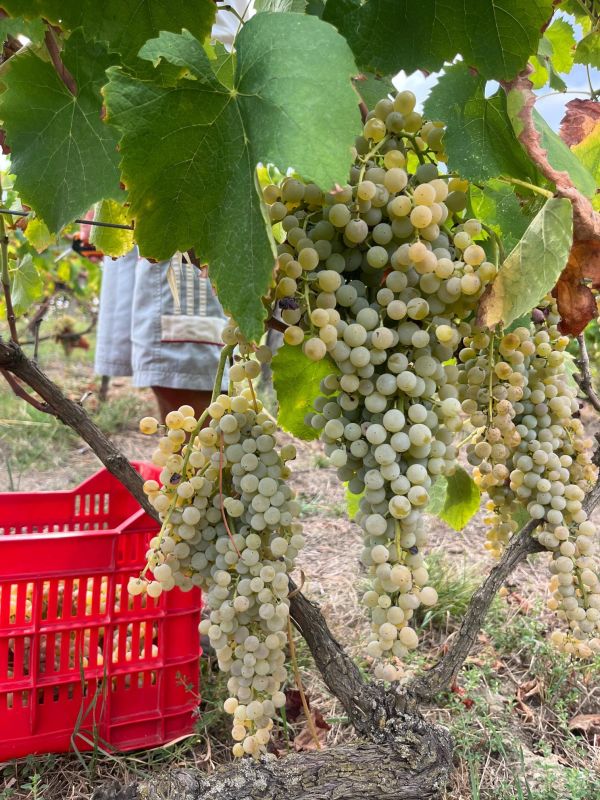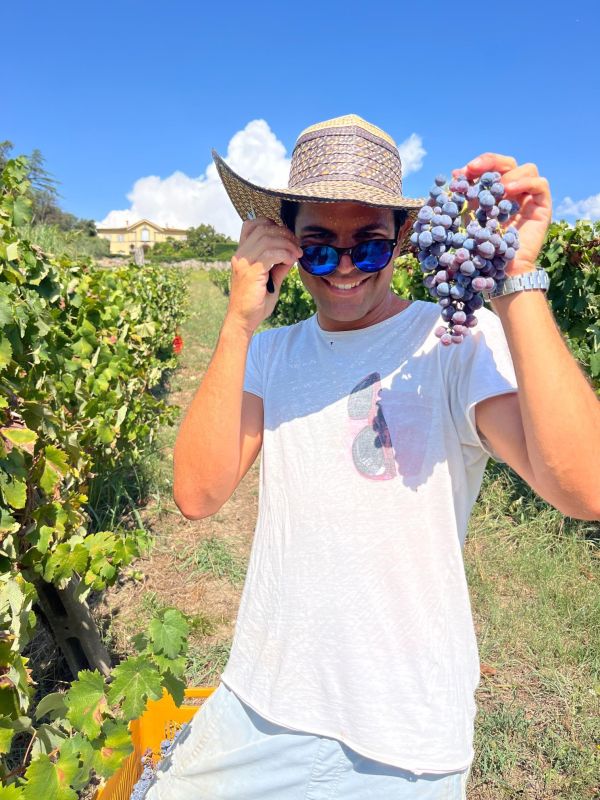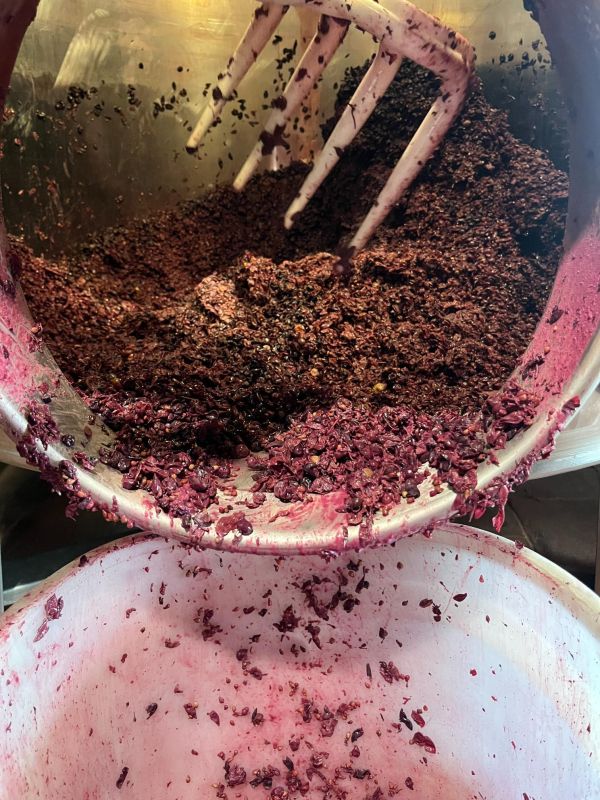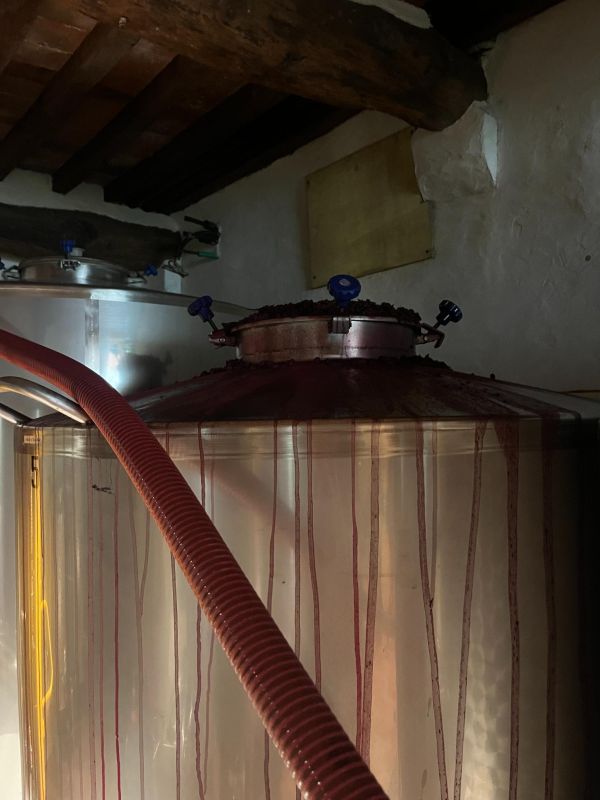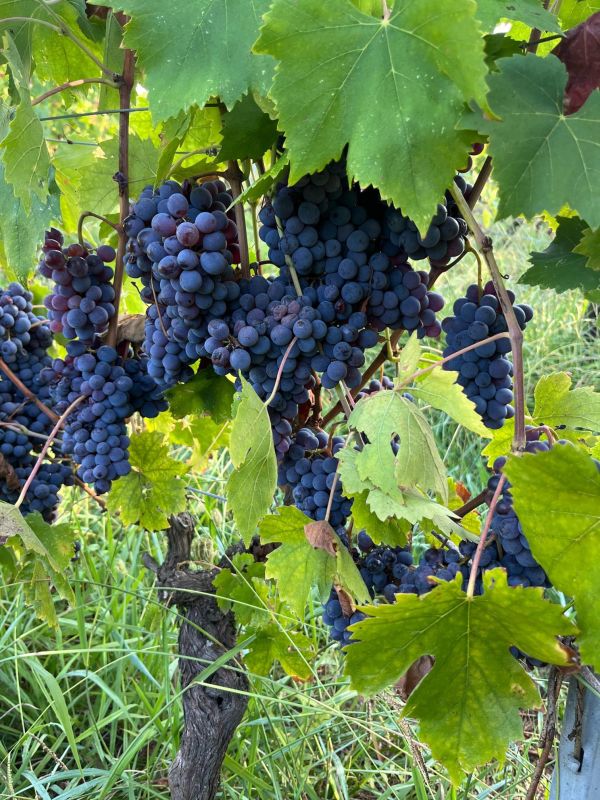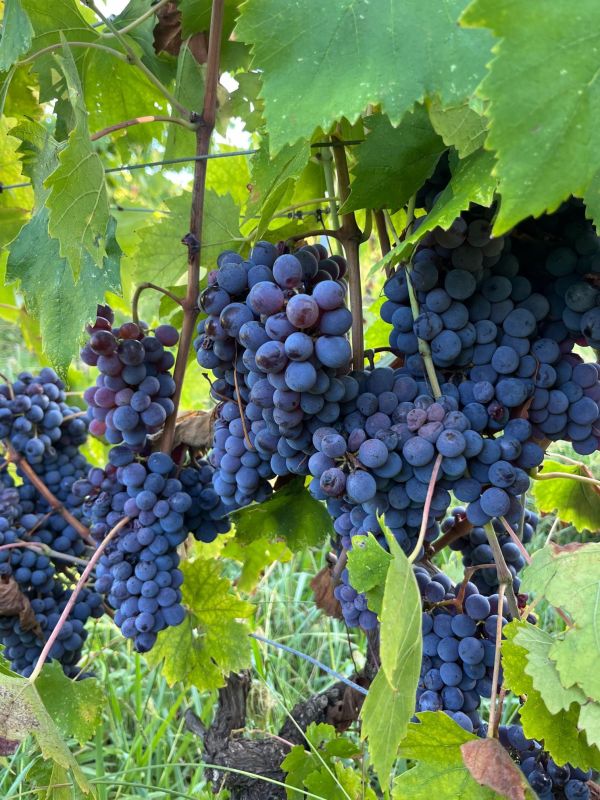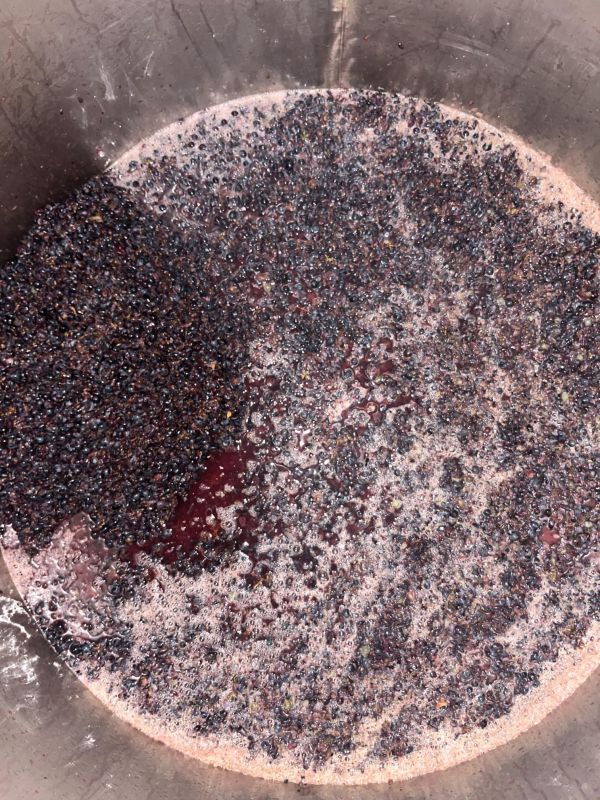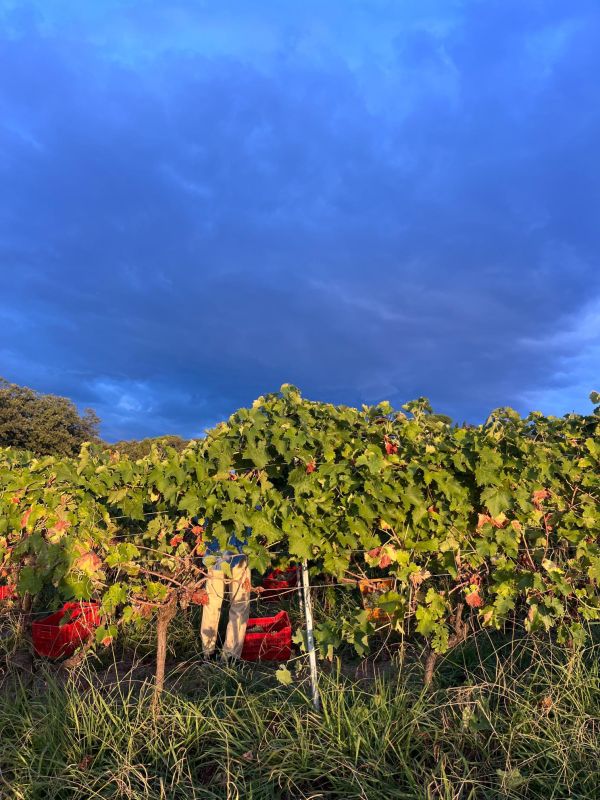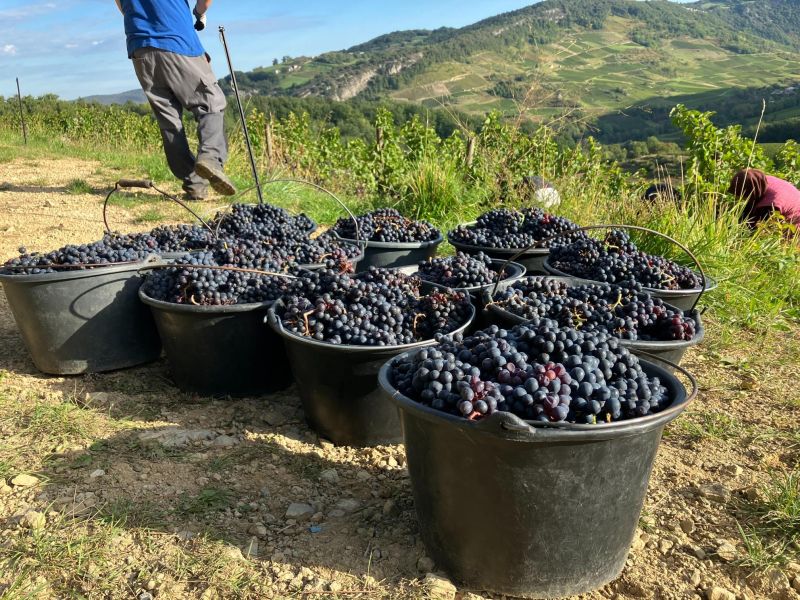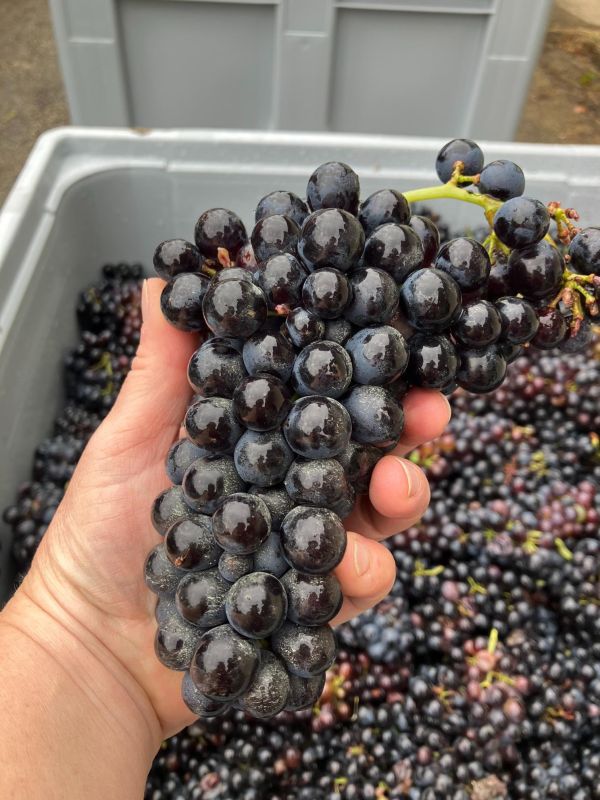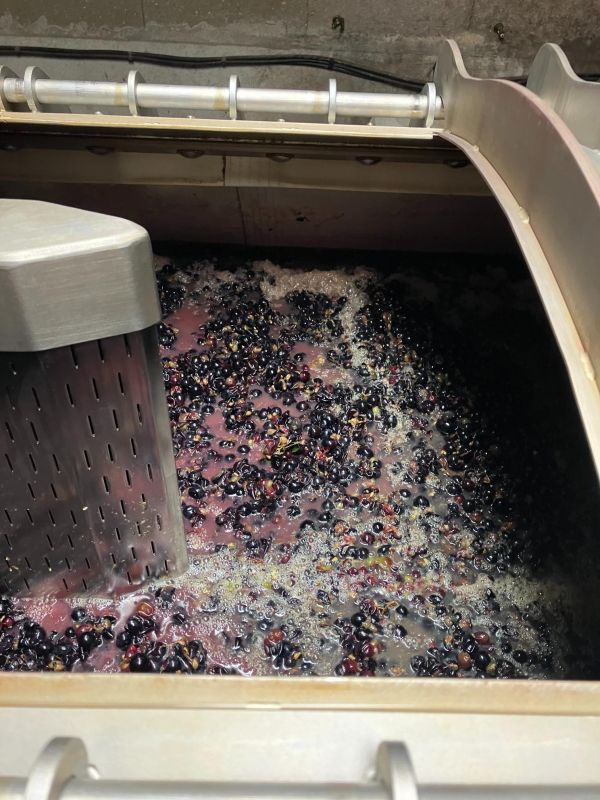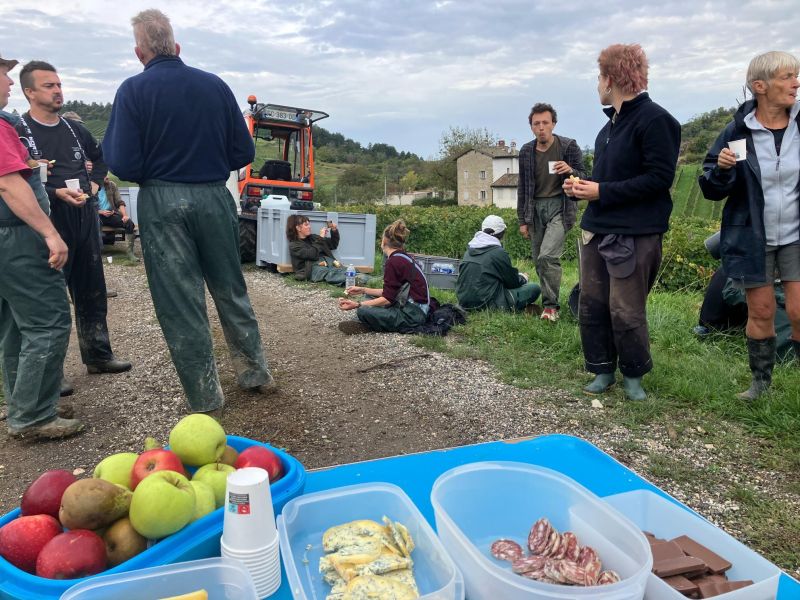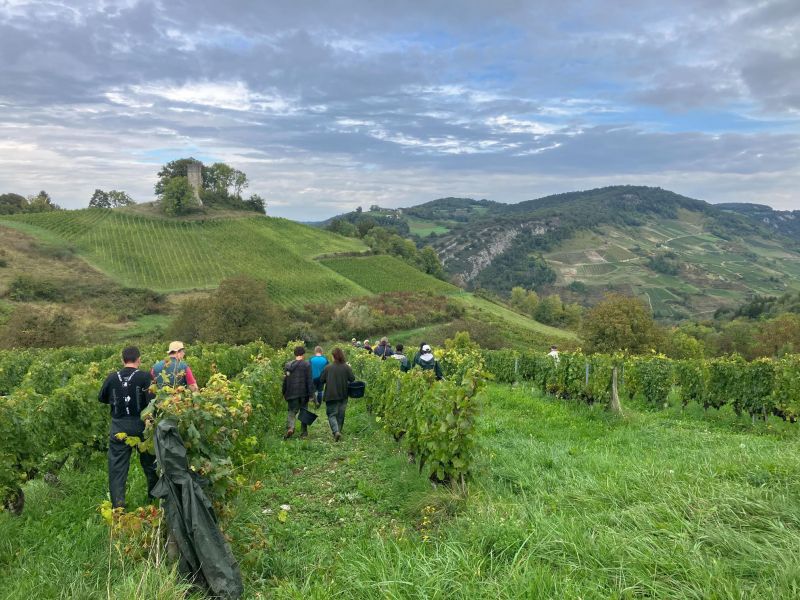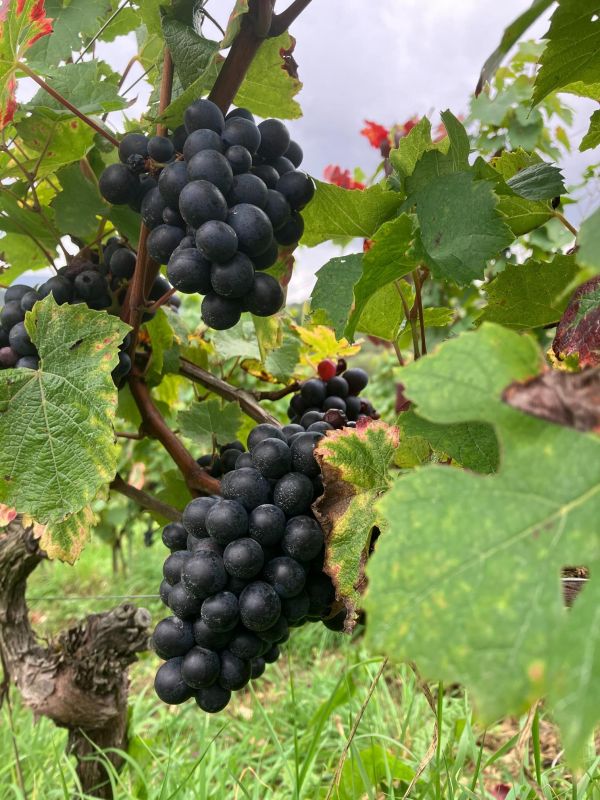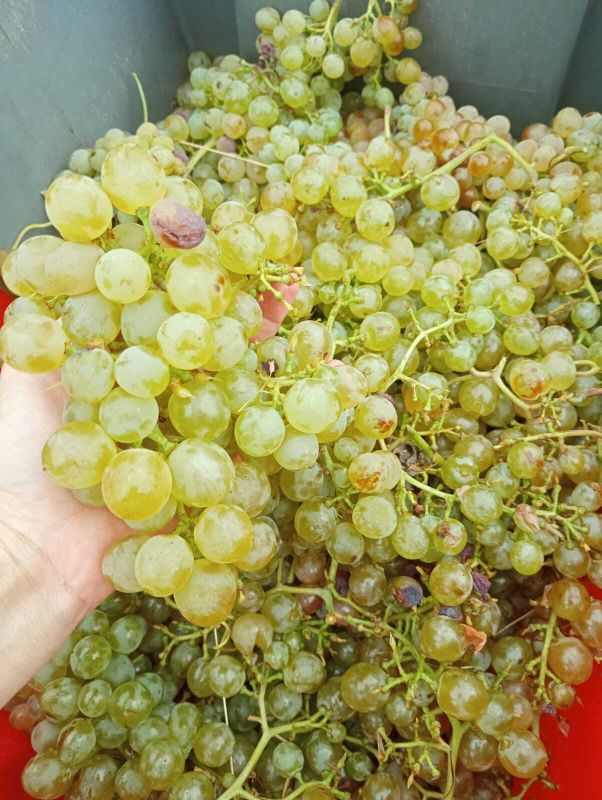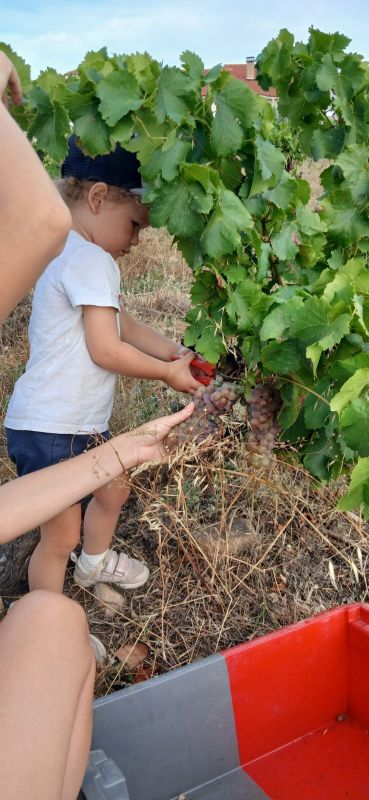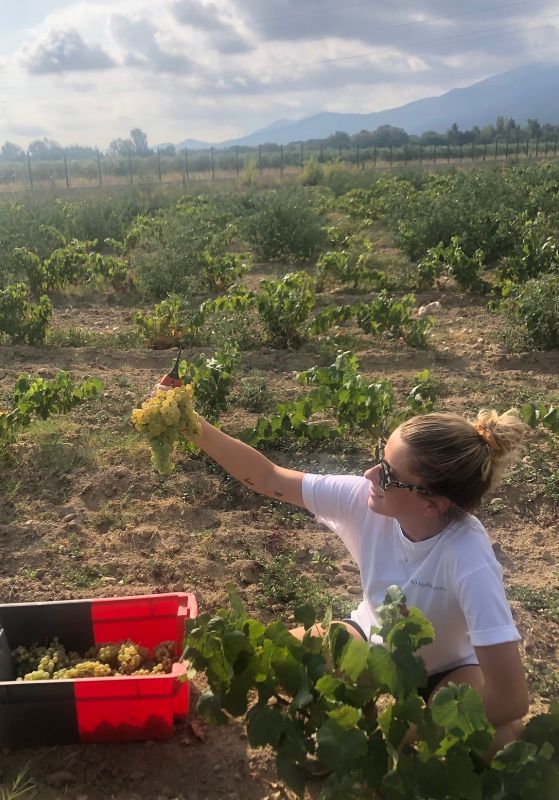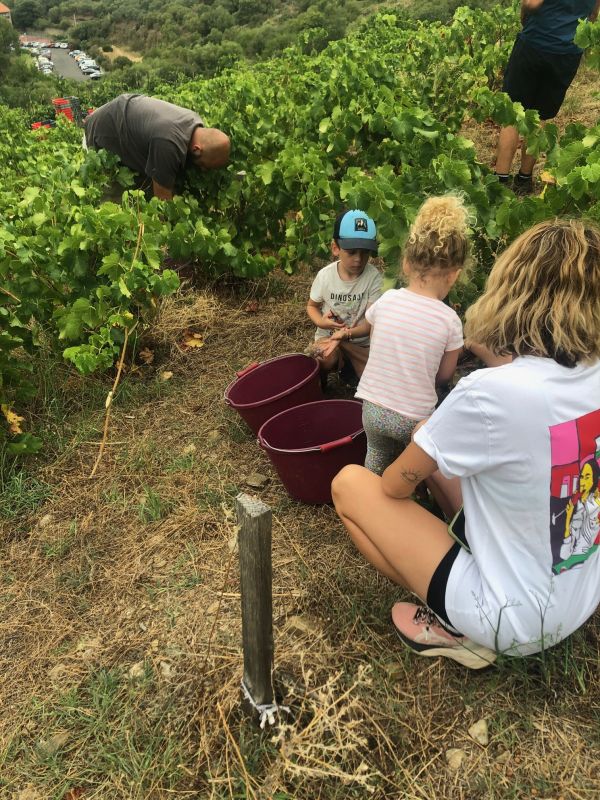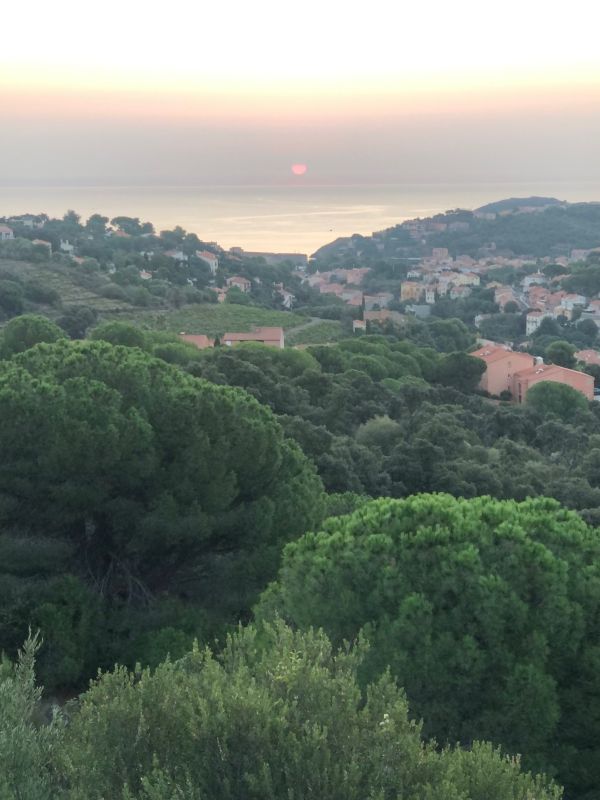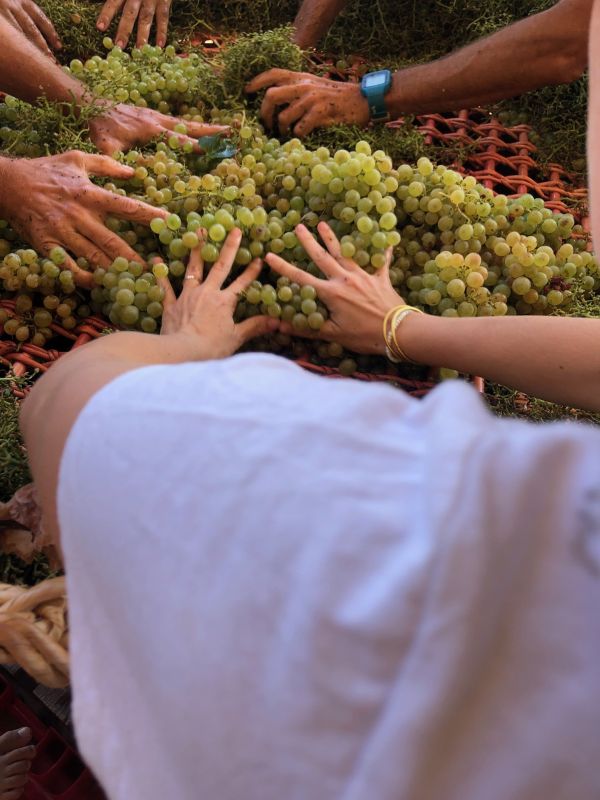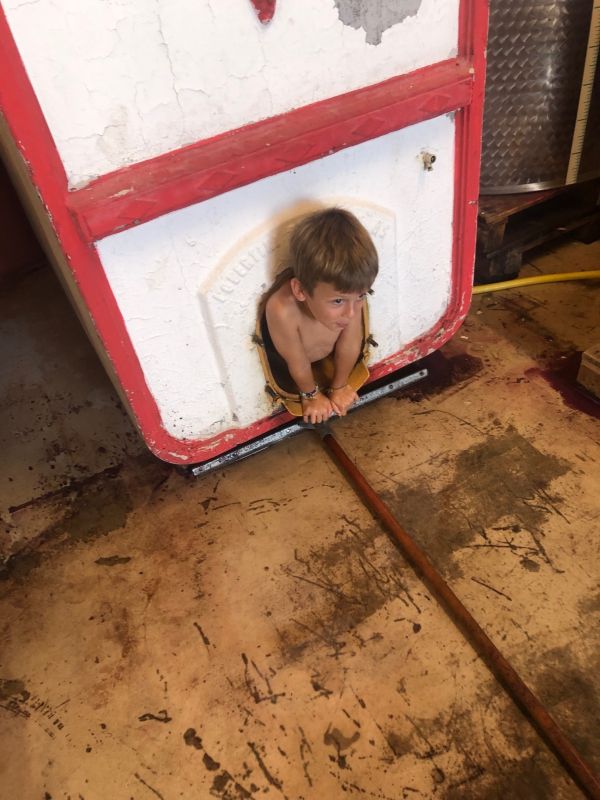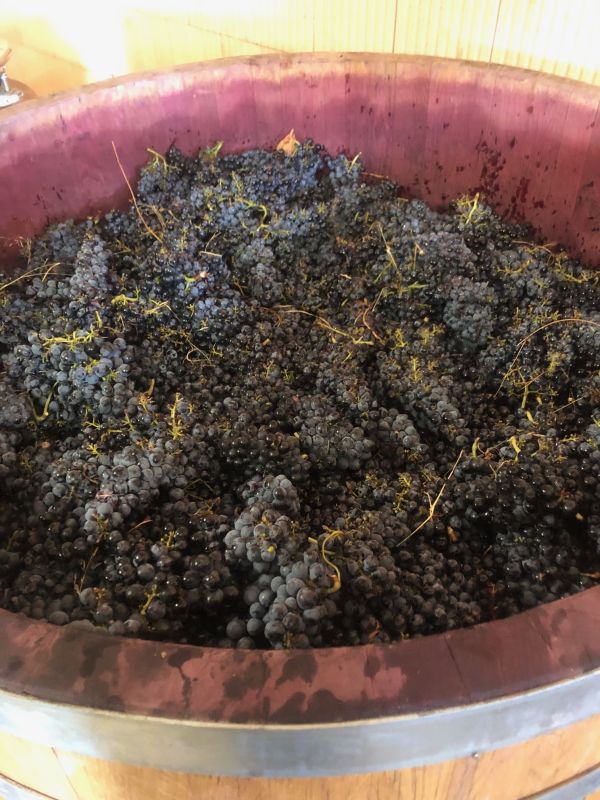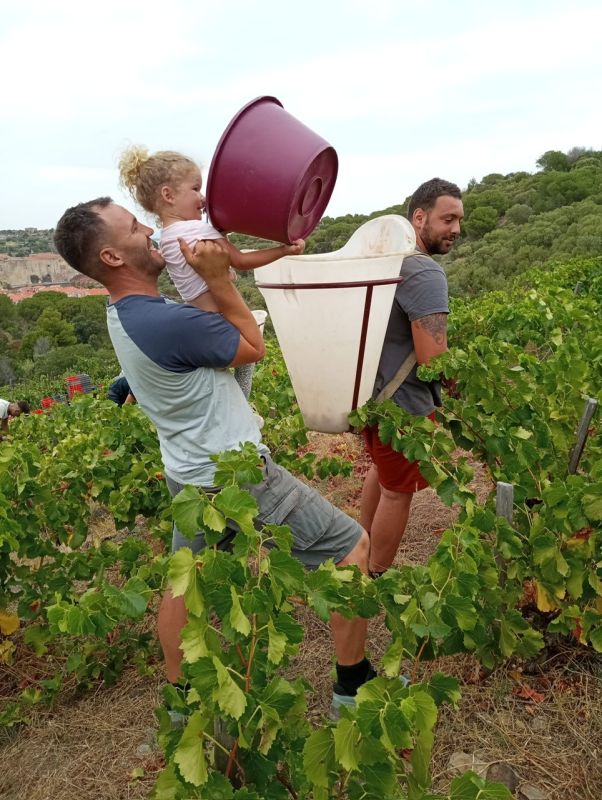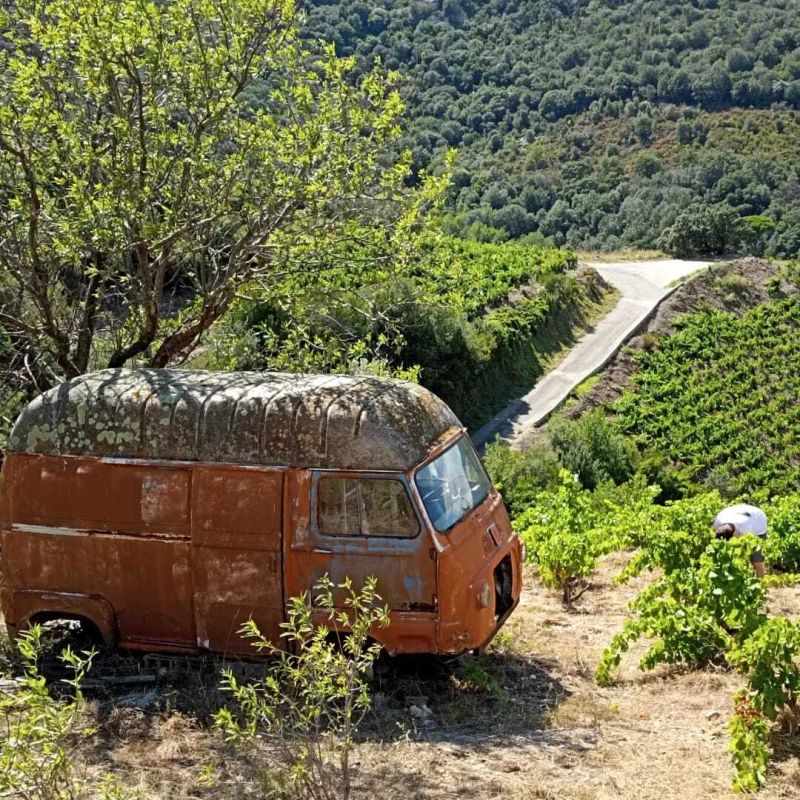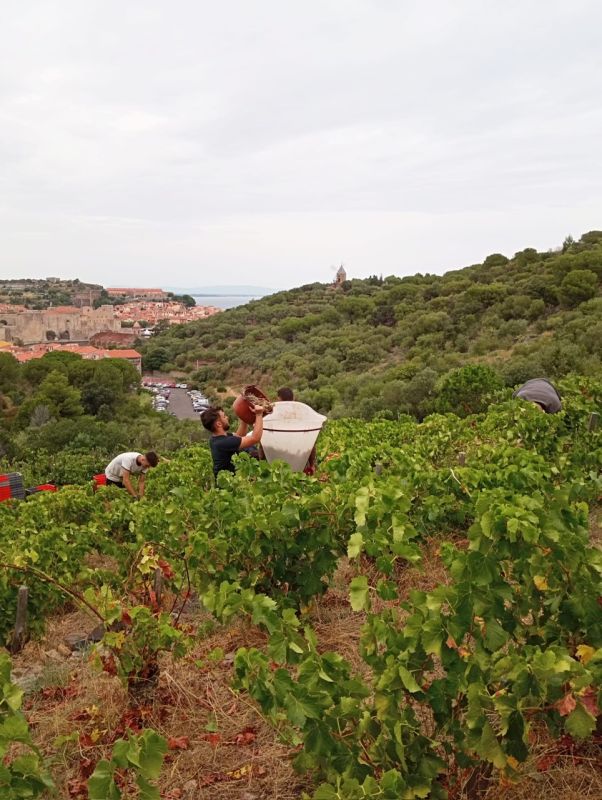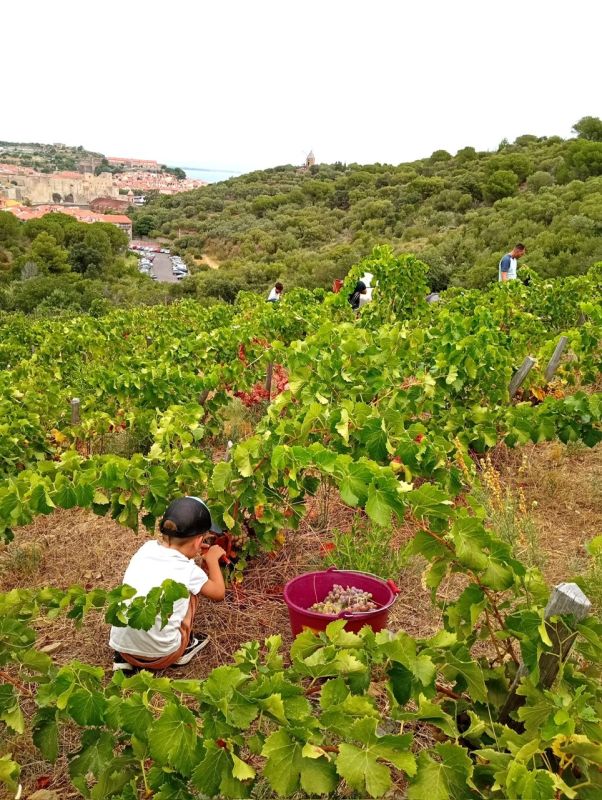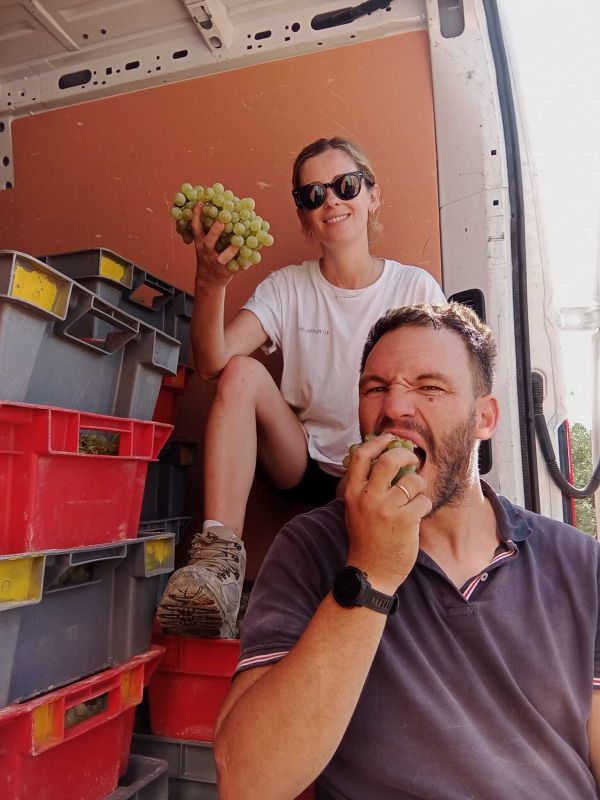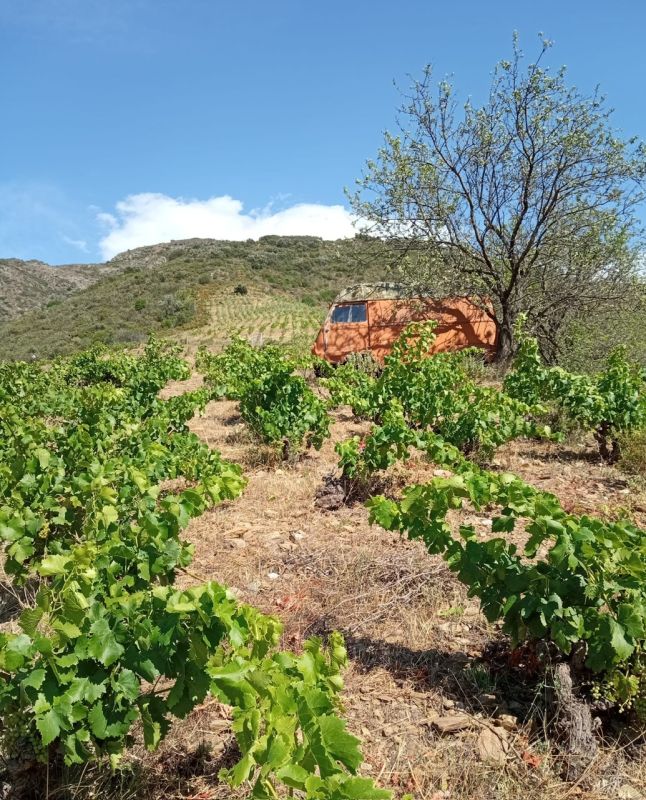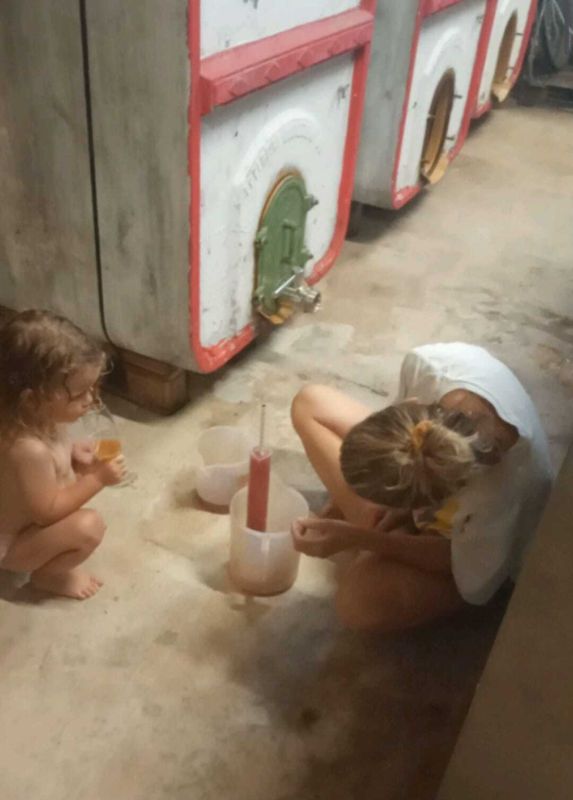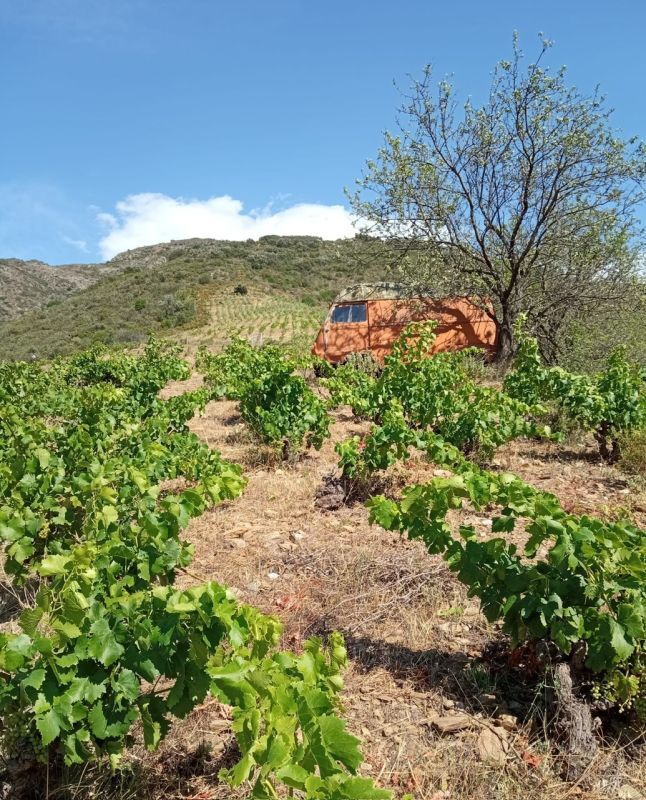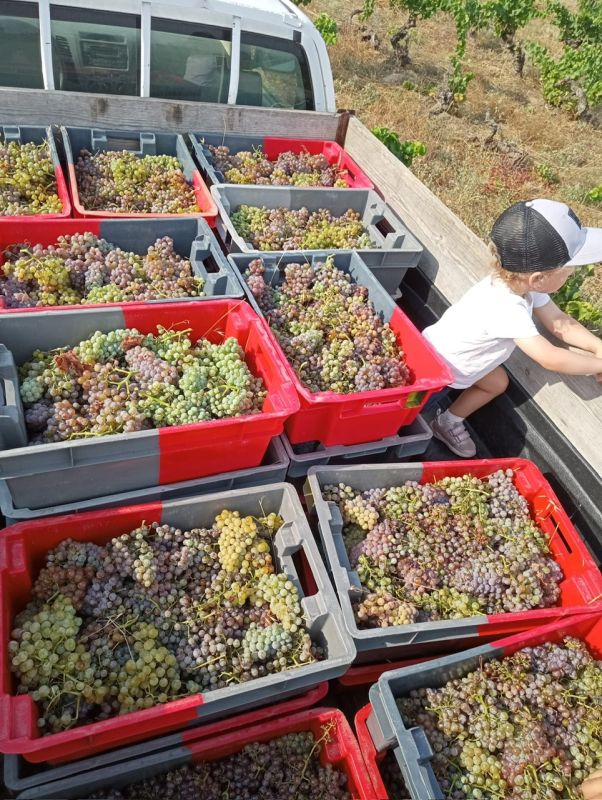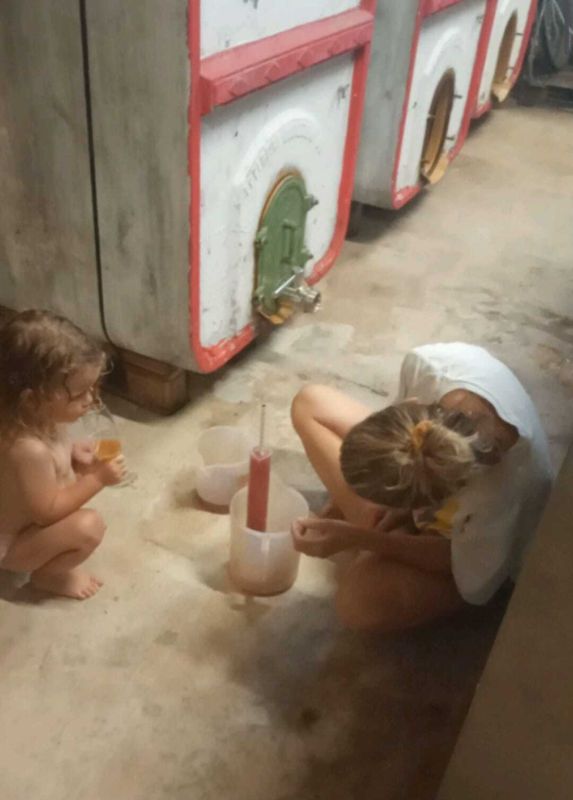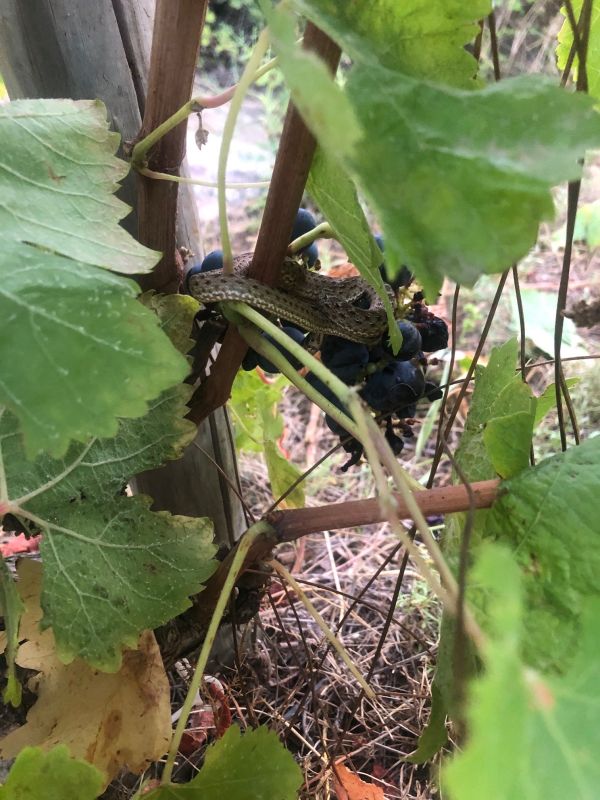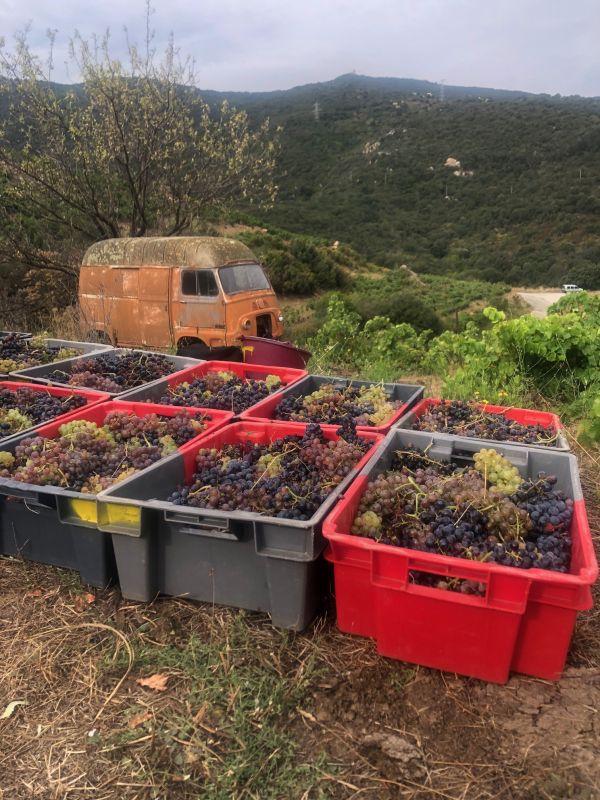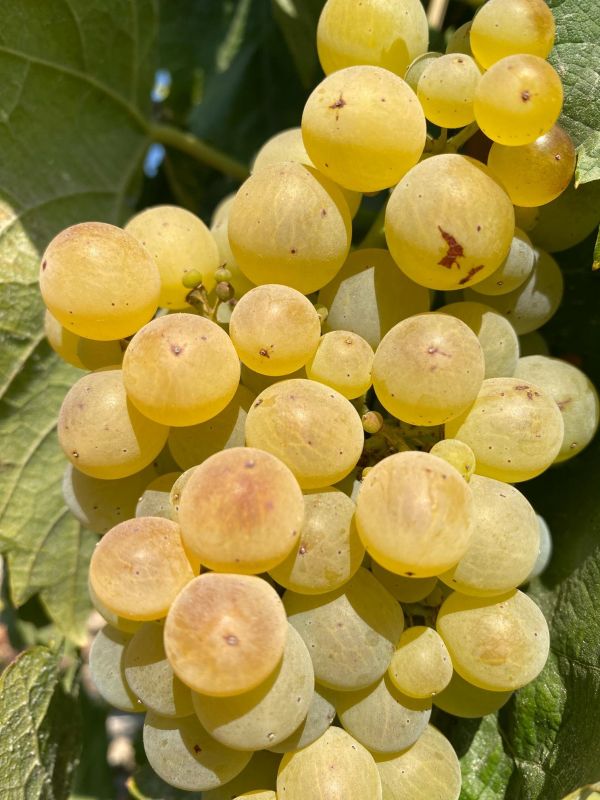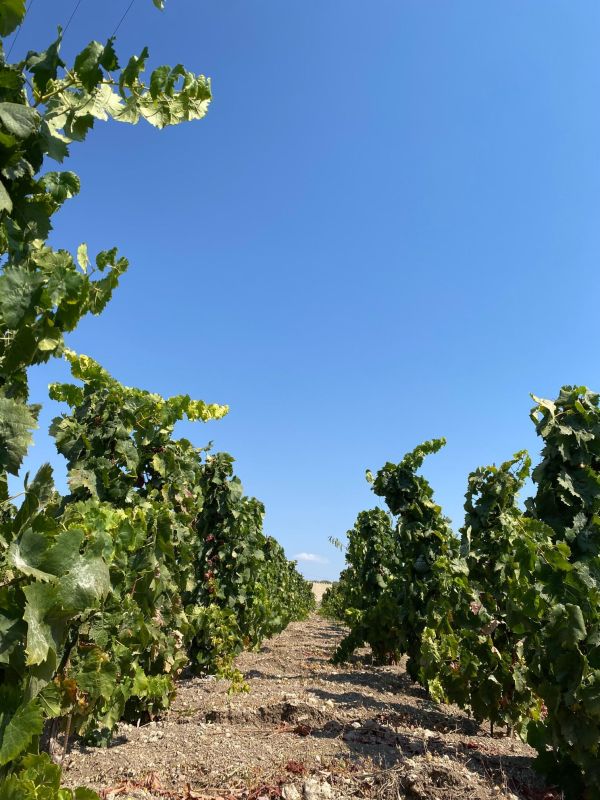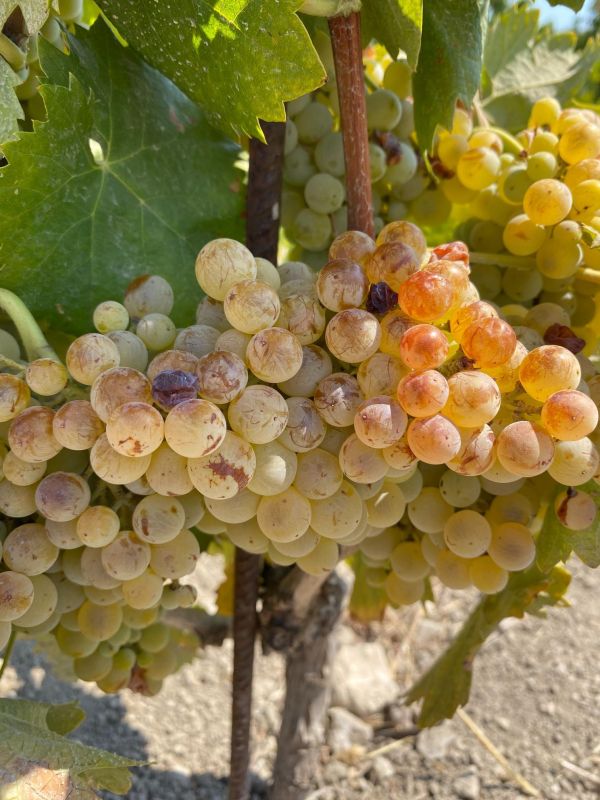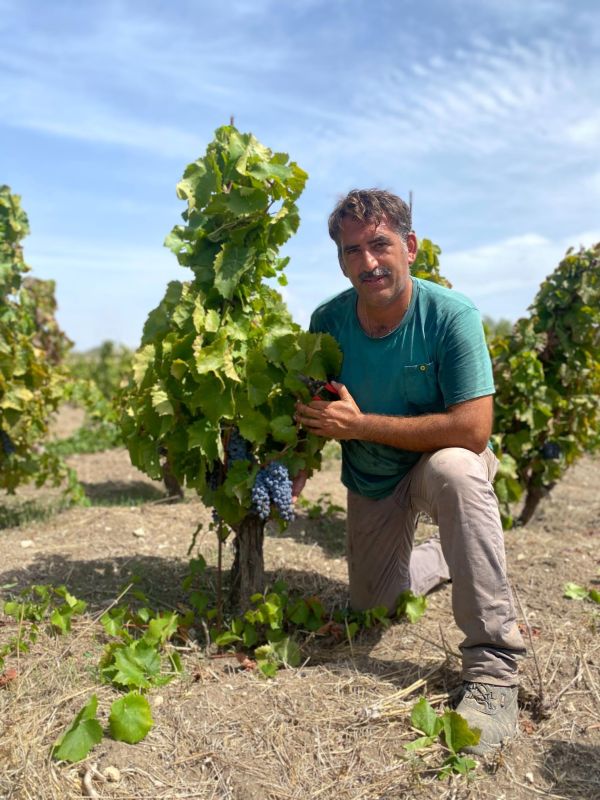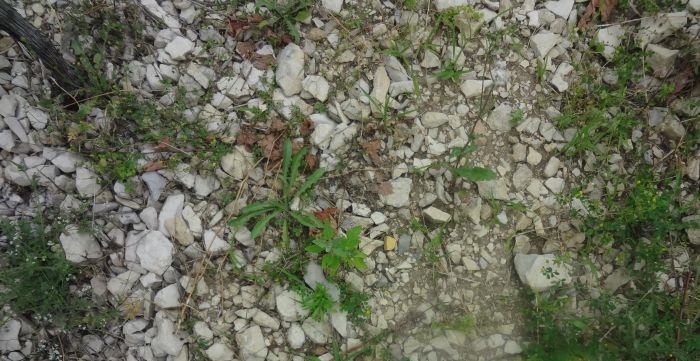Montagnieu October 22nd:
April 2007: summer heat, with barbecues suddenly taken out of their winter quarters for long, warm nights of eating outside…. Vines are early, the winemaker is already late. Just a few days before, he was relieved to have escaped the frost!
In the first week of May, there are blossoms in the vines, even among the Altesse and Mondeuse plants, and these two are very late-ripening varieties. People said: “Count the days! Harvest 100 days after flowering, we are going to pick before August 15th, for sure! And there is a heat wave waiting for us, worse than in 2003!”
People talk, some are alarmed, others delighted: summer has arrived, well ahead of its time, and we’ll have to get used to the high temperatures. But what about the forecast pointing to a change of weather pattern around May 10th? “Don’t believe it, everything gives the same prediction, the Quatre Temps, the New Moon, Brother Benoît’s ever-reliable almanach: heat wave for all!”
Well, it looks like, this time, our old folks were totally wrong: instead of a heat wave, we ended up with three months of intense watering.
Of course, the vines blossomed well, before the rain, and quantity seemed adequate in the Bugey, but quality was a lot less certain.
I did not dwell on this. No sense in complaining, but it was crucial to define a work plan adapted to this particularly rainy summer. This required great attention to details and great concentration. In a difficult year like this, the number one goal was to protect the vines from disease.
Rain was frequent, followed by an occasional one or two sunny days in a row. The humidity was to be relentless all summer, delighting mushroom lovers (as early as late June) and putting fear in the souls of winemakers, dreading the terrible mildew fungus.
Like a chess game, it was a matter of moving the right pawn on the right spot at the right time. For me, it meant picking the best treatment for each plot and using it at the best moment. In the end, I didn’t do more frequent passages this year than in any other year, and the final quality (in foliage and grapes) was excellent. Although it was hard to slalom between the rain and plan it all, I was comforted in the notion that prevention is better than cure, and I kept optimistic.
As my father Jean likes to say: “Fear doesn’t alleviate danger!” I have been a winemaker for almost 20 years now, and I am beginning to manage the notion of danger. But I do not want to be found waiting, I must do everything that is necessary.
That means more care and work in the vines to aerate the foliage, remove all the extra shoots, prevent tangles, straighten the branches, trim them at the top, green harvest in July, all that while wearing rain gear. Thank you and bravo to all those who helped or replaced me in the vines: you believed in what had to be done, you took care of my vines as if they had been yours. Thank you Philippe and the team. Thank you Nathalie for always being at the cellar receiving visitors. Thank you Jean for your advice and the long discussions that led me to wise decisions.
In early August, we thought we had won the battle. No disease, healthy leaves and a good crop ahead…. If only the weather could turn sunny for a month! Not quite, not yet, but when I returned from a week off on August 15th, there was a change in the air, and from late August through Ocotber 15th, we enjoyed beautiful weather and only two days of rain.
The harvest started on Sept. 3rd with Chardonnay for the sparkling Montagnieu. 10 to 11 degrees of potential alcohol is good for such wine (the methode champenoise adds about one degree to the final wine). For once, acidity levels are perfect for this region.
Then we picked Pinot noir, superb-looking, above 11.5% natural alcohol with even ripeness all over.
By picking a few plots of Altesse for the sparkling Montagnieu, I was able to get a better idea of this variety's behavior in this vintage: the alcohol varied from 10.5 to 10.7, which is fine for a sparkling, but meant we had to wait for the still wines.
A week later, we harvested the old-vine Altesse (9-10,000 vines/HA). These were very ripe, and a little rot was starting. Nothing to worry about, though, just enough to remind me of Henri Goyard and his superb wines (NB: Goyard, from Domaine de Roally in Viré, was a friend and mentor to Peillot when he was still in school.)
We went back to the Altesse on treillissage (what we call “hautains” here, or high vines). My pickers really thought I had lost my mind, we were picking, but not everything. I made them leave about four bunches per vine, the best-looking, ripest and healthiest. Nobody had ever seen this in Montagnieu!
What crazy work…. At that point, I was not calculating the cost of this decision, but it was hard to make my team understand my point of view. And it was a gamble on more sunny weather.
We got it! On Oct. 8th, we harvested a cuvée of Altesse above 14.5 natural alcohol, and really different in character. It was worth the try.
My Mondeuse were picked earlier, and thanks to a green harvest, the ripeness was good. During maceration and fermentation, the typical peppery aromas were a joy to smell, and I think this will become a beautiful vintage.
As I write, the Altesse that were picked first are slowly, quietly finishing their fermentation. They taste well already, even before the winter cold has not clarified the wine yet.
At last I can have some rest, which is all the more appreciated after a year of hard work. With a promising vintage, maybe even an exceptional one, given the quality of fruit the whites possess, I am in top form. Cannot wait for the spring and my trip to America!
